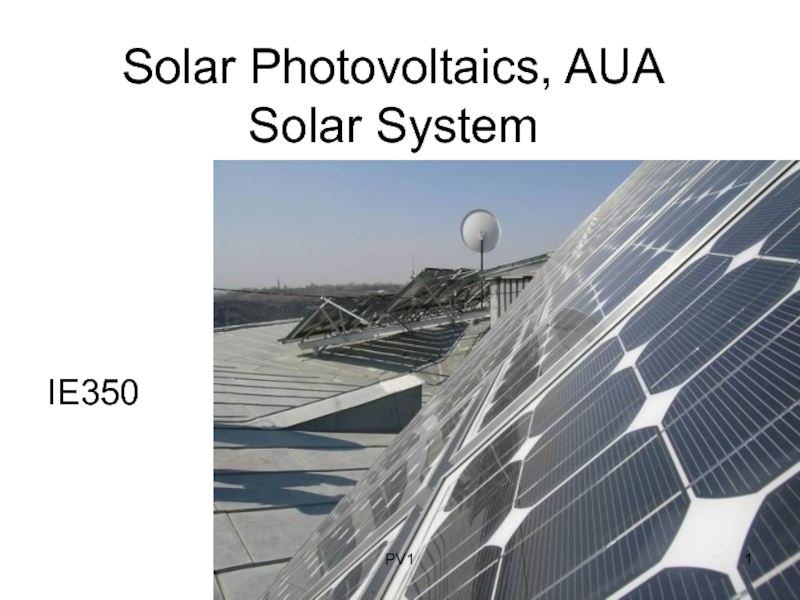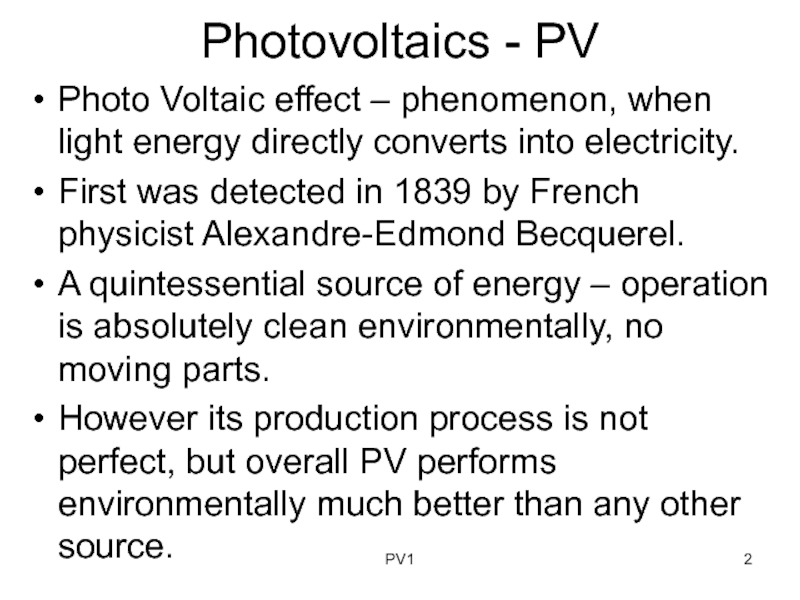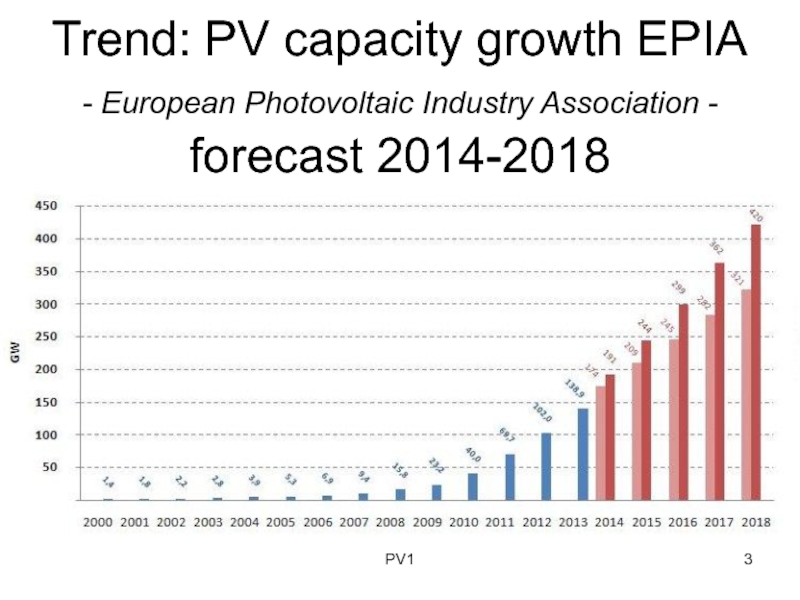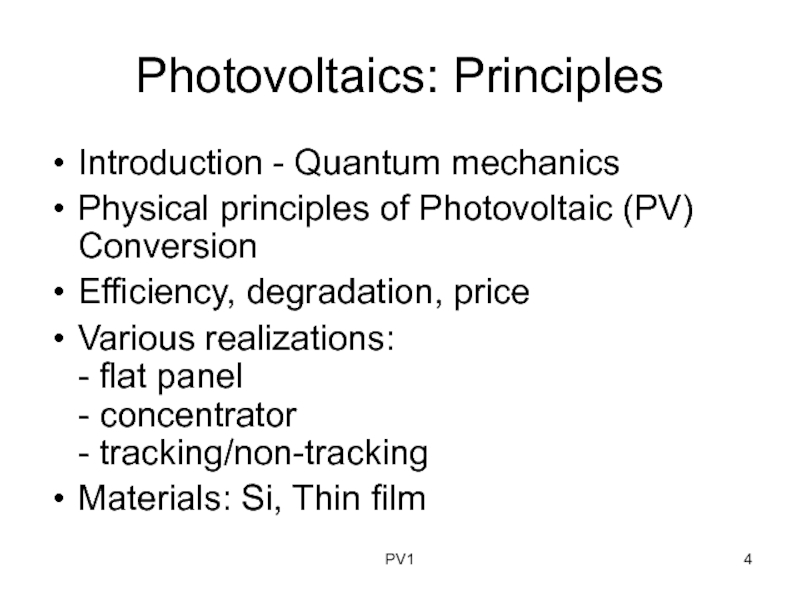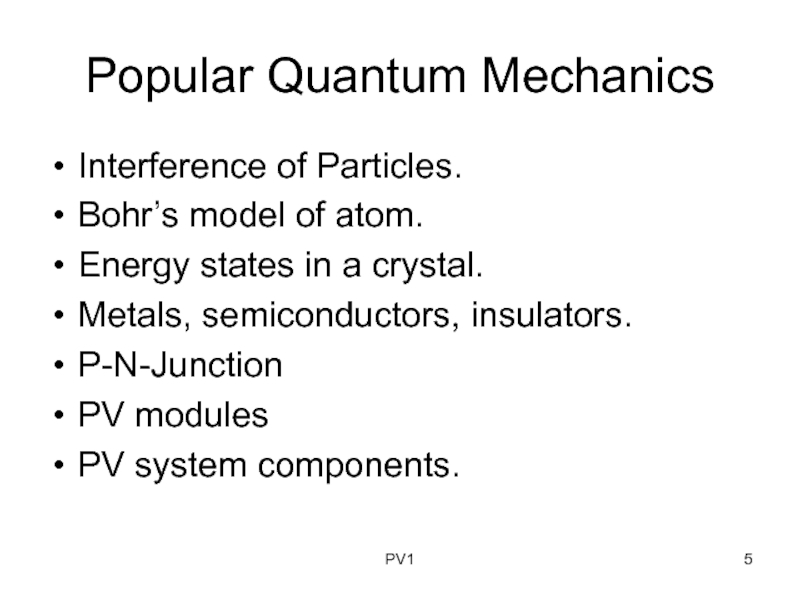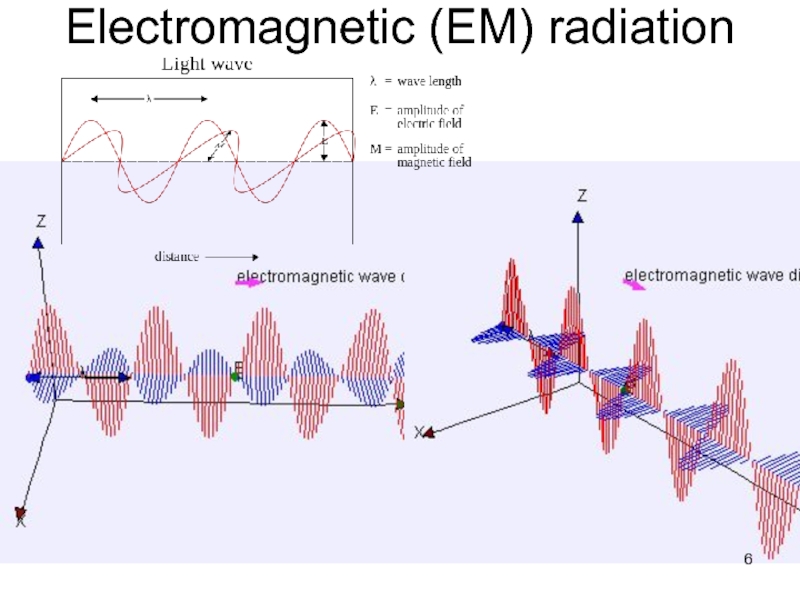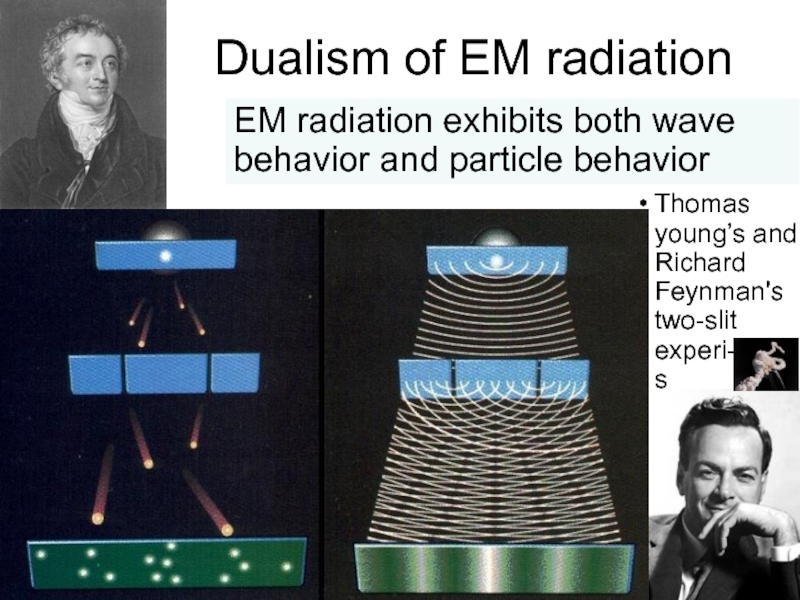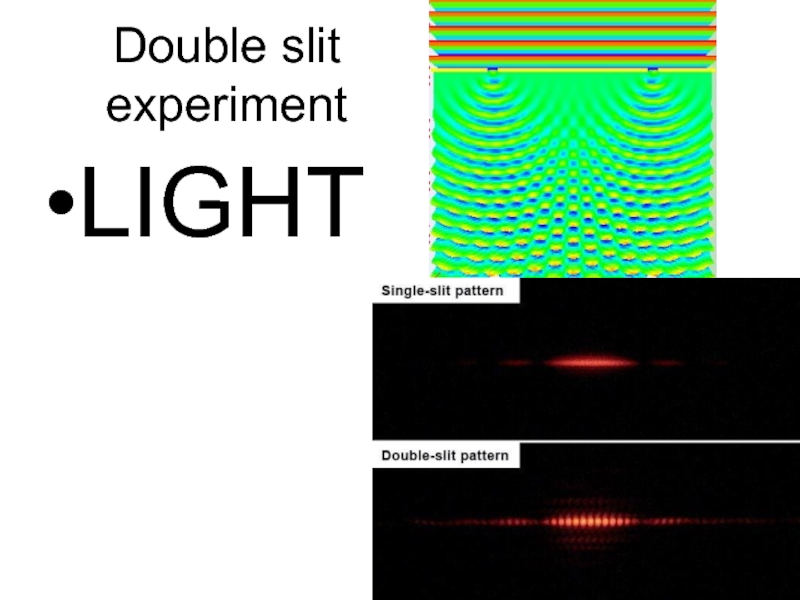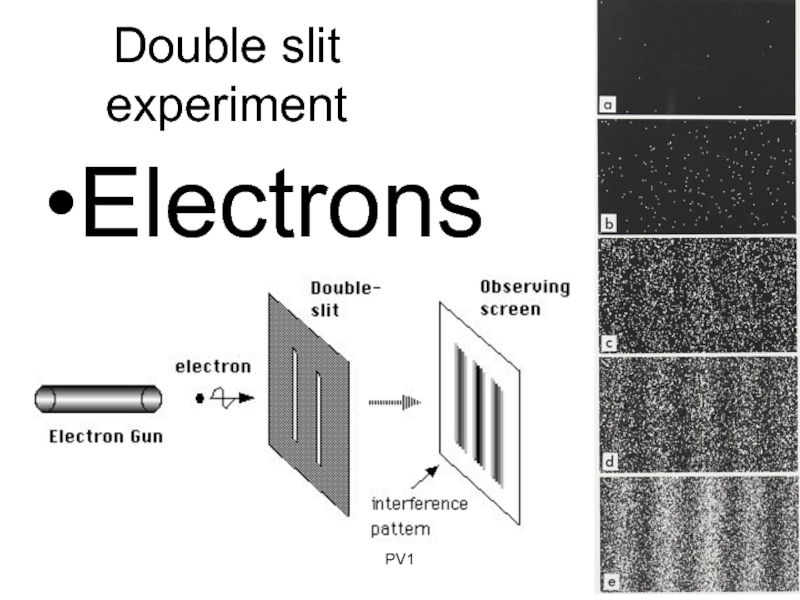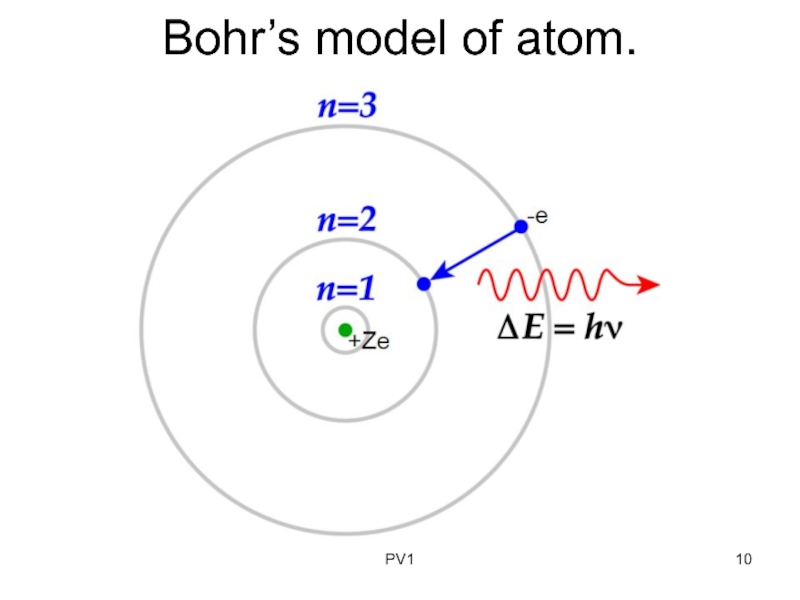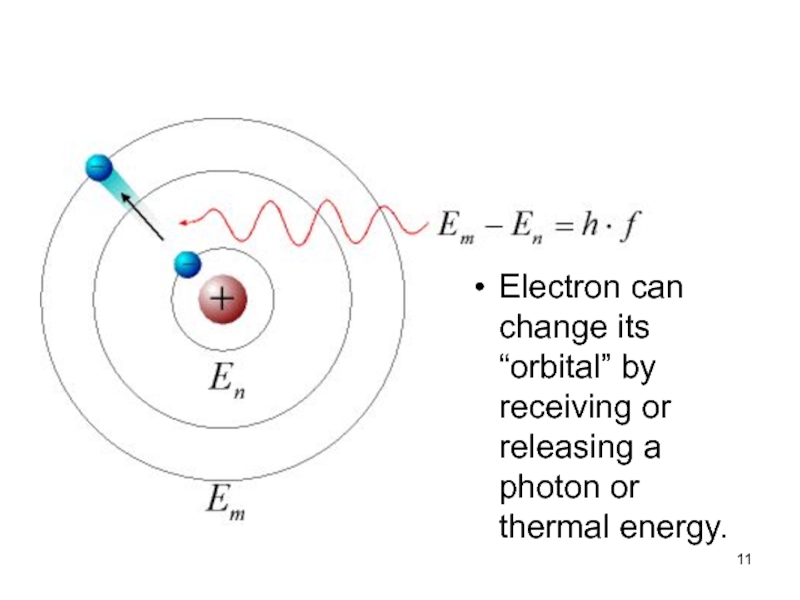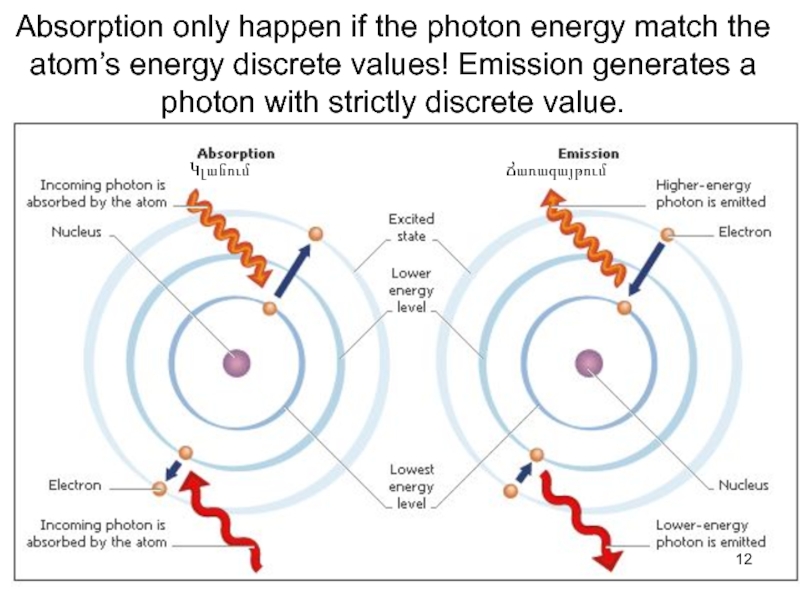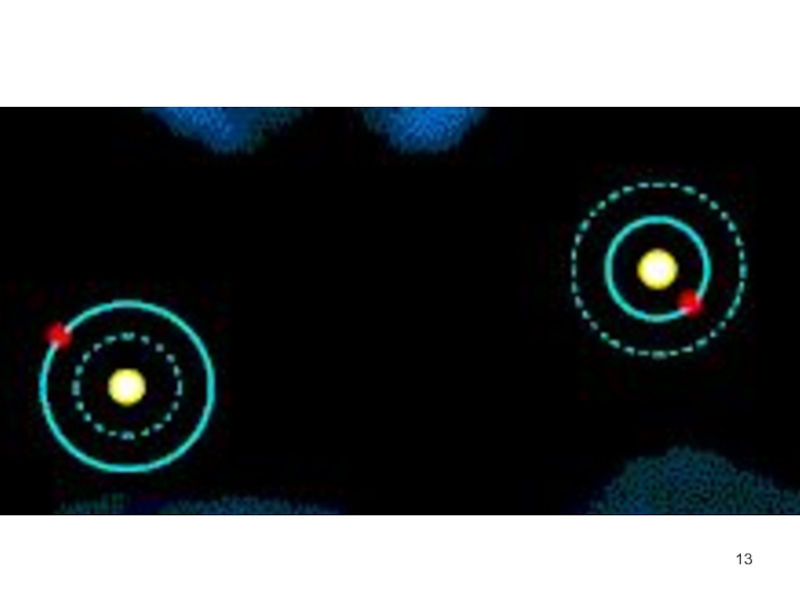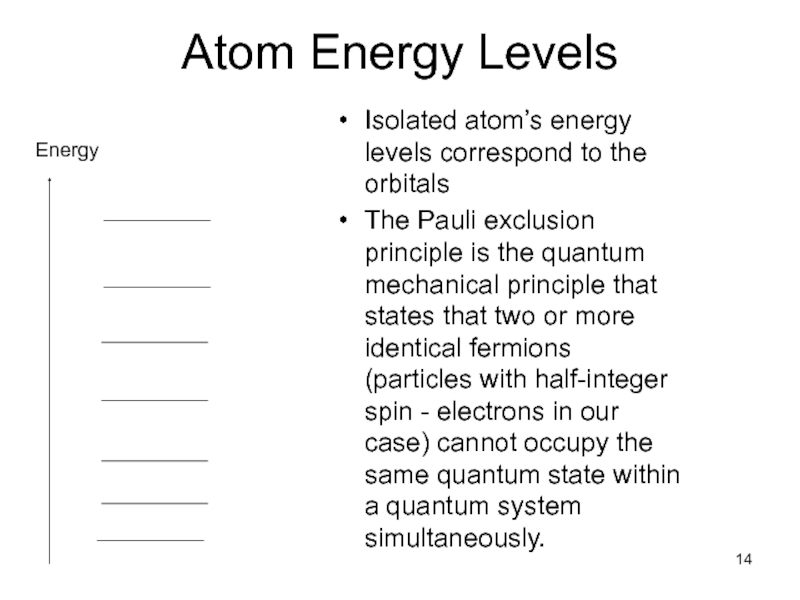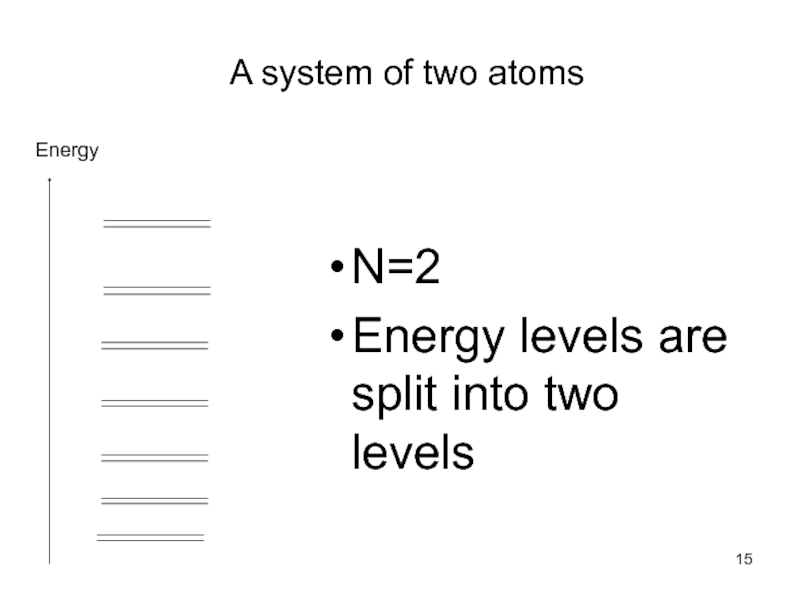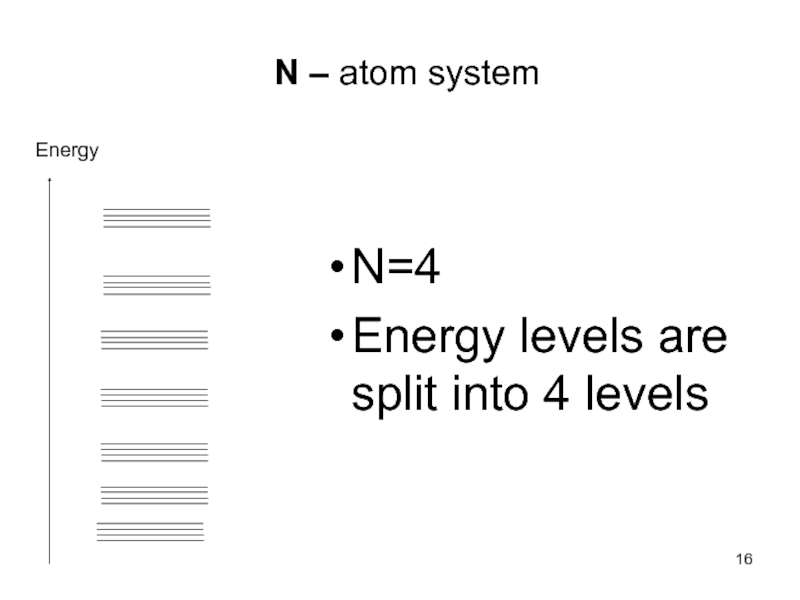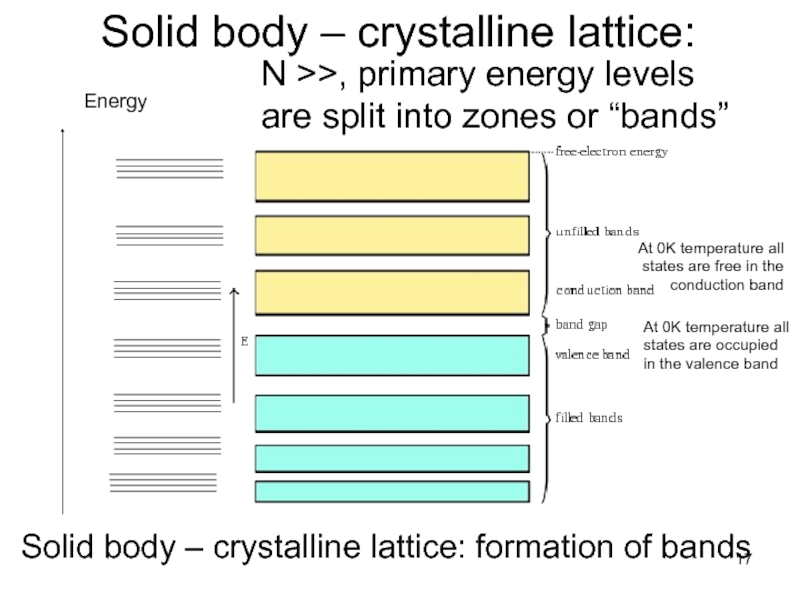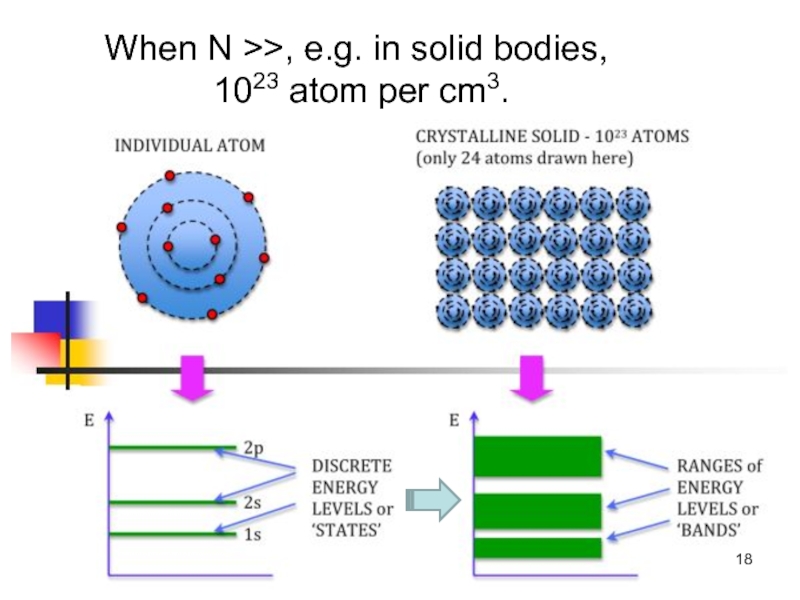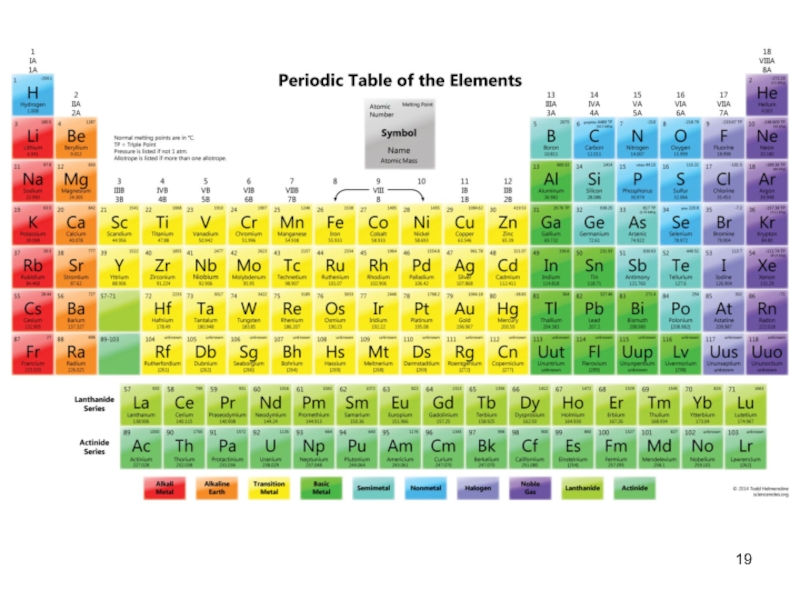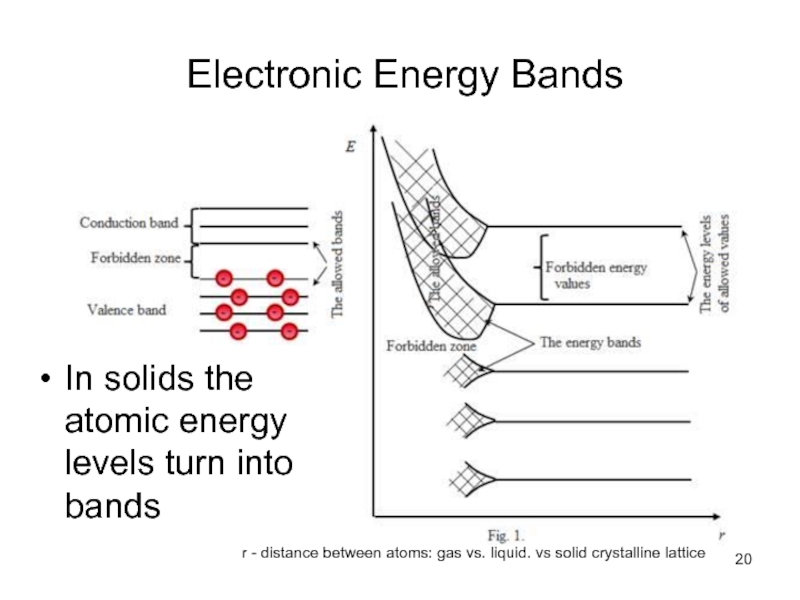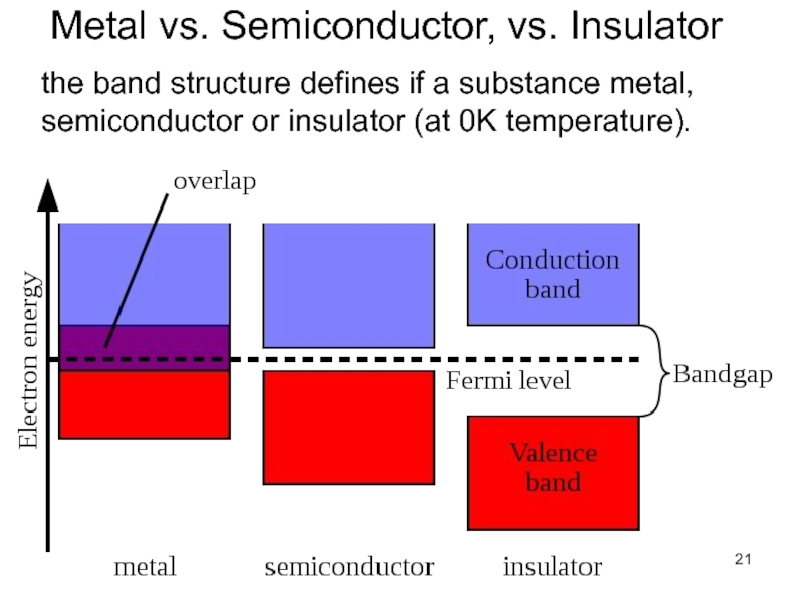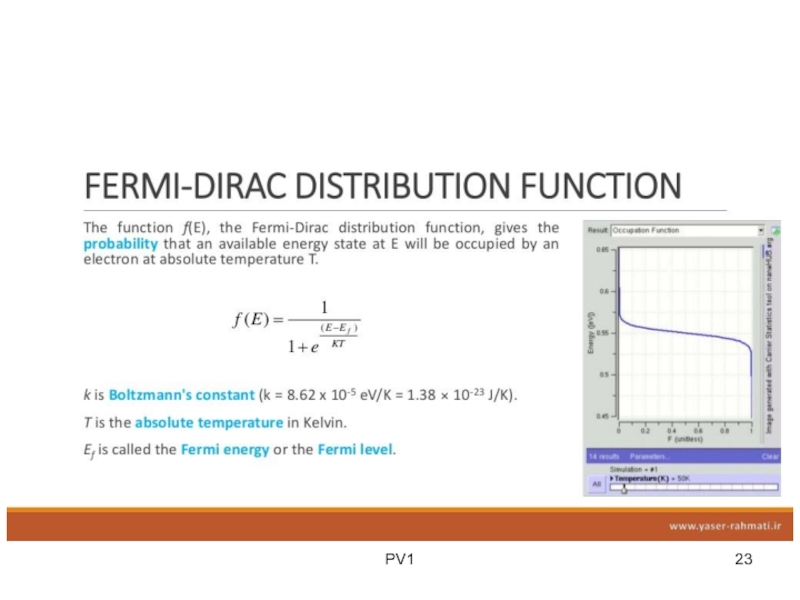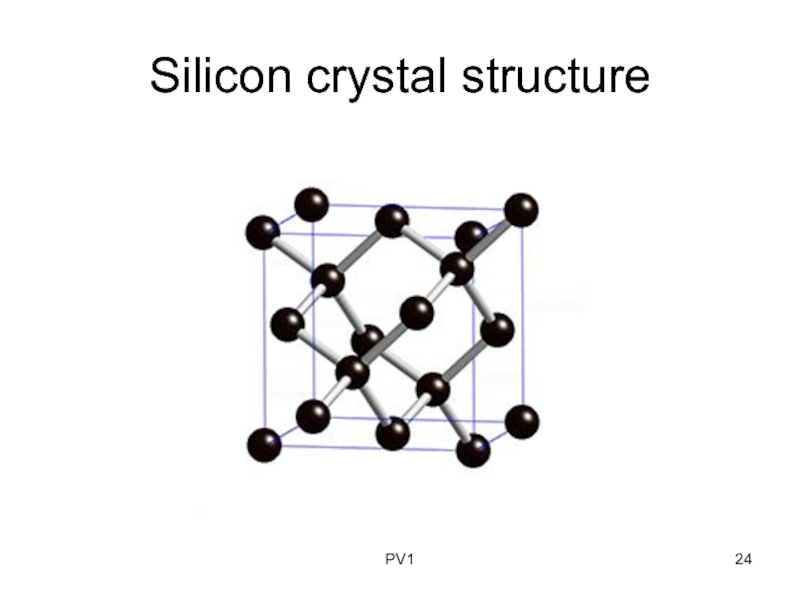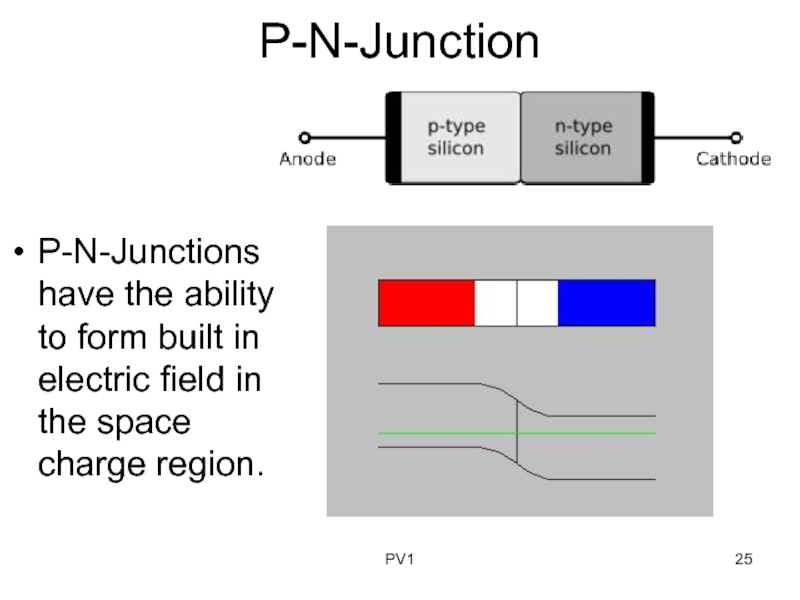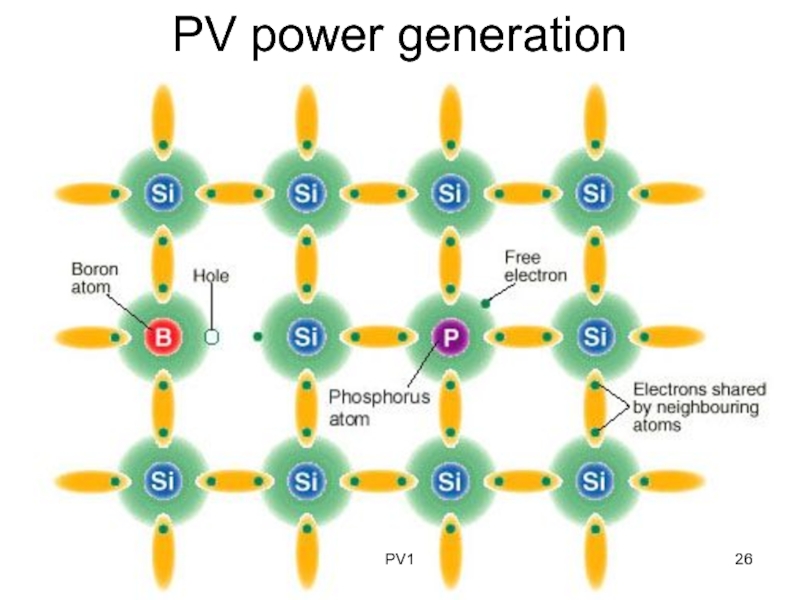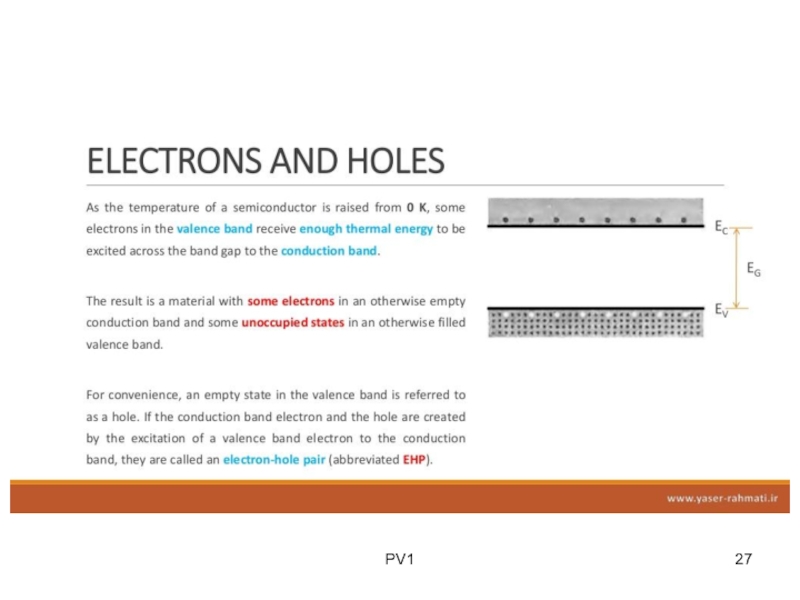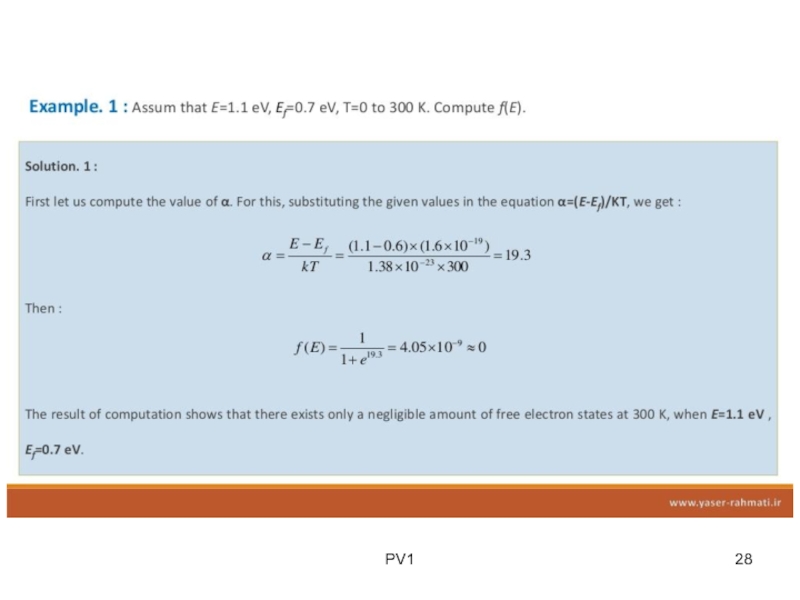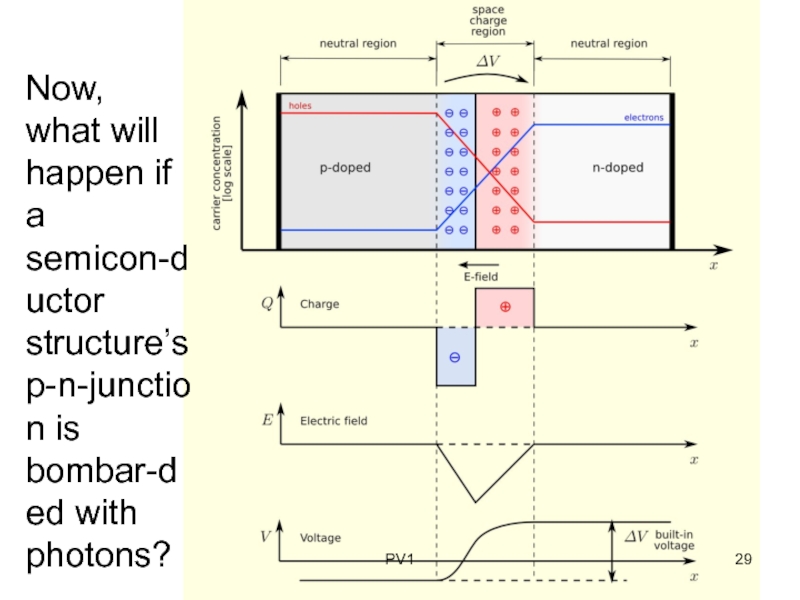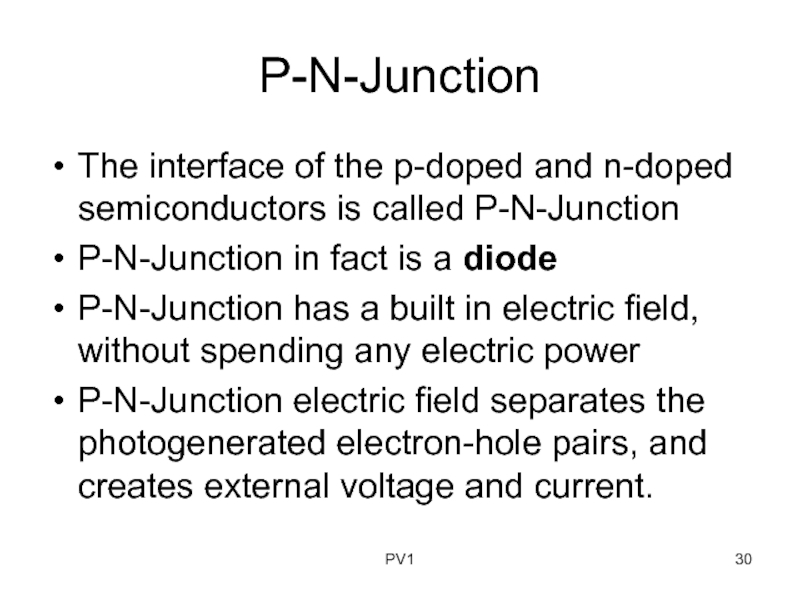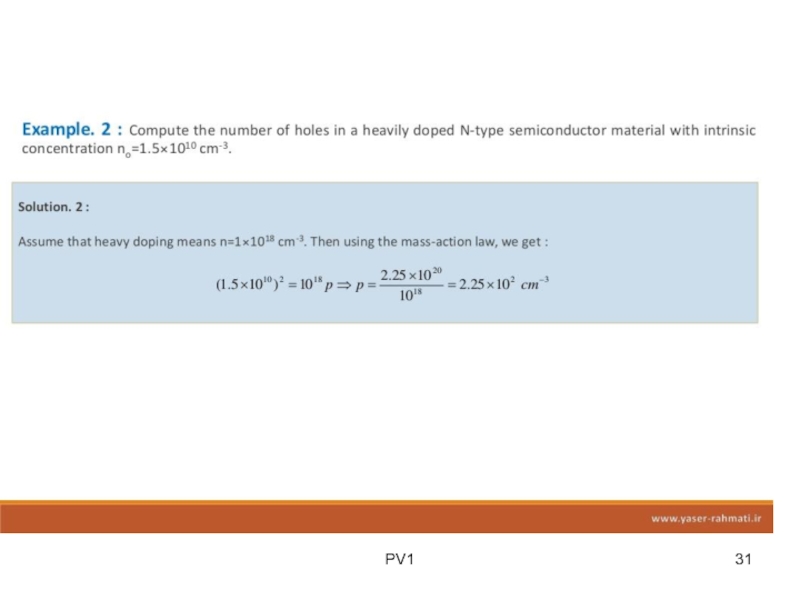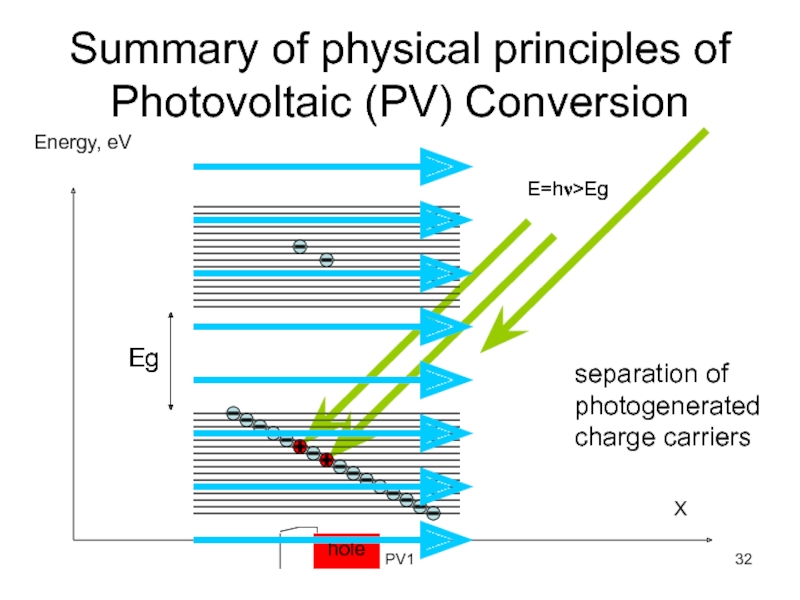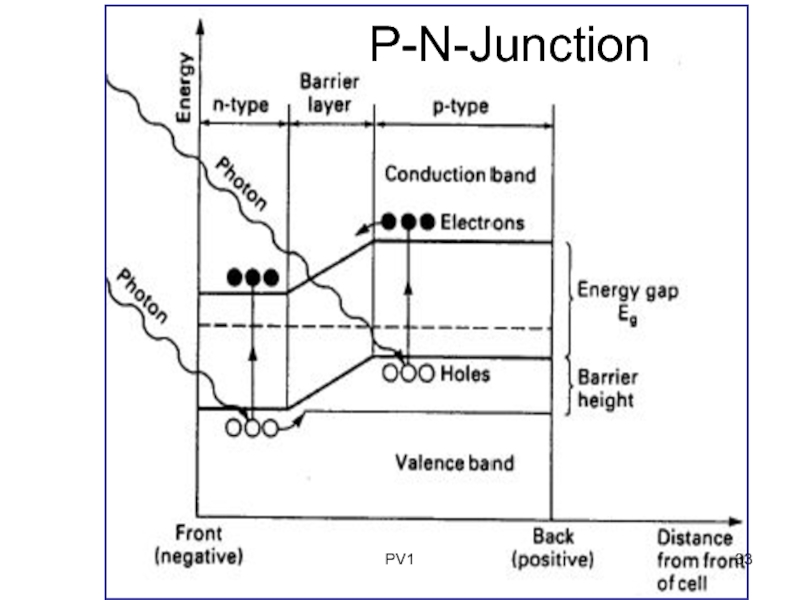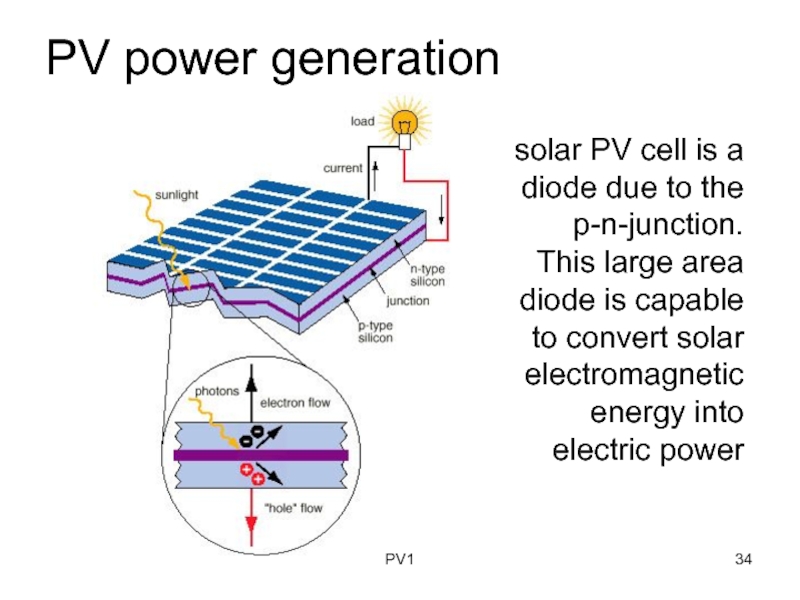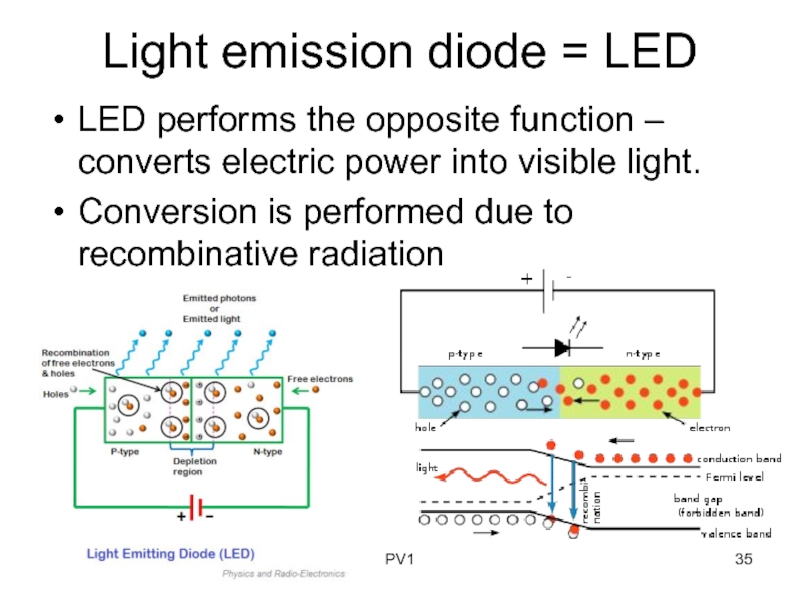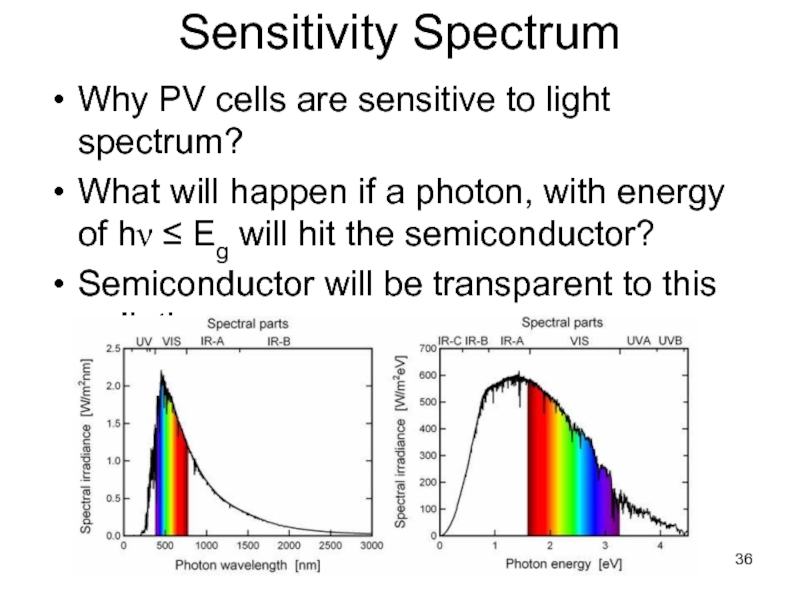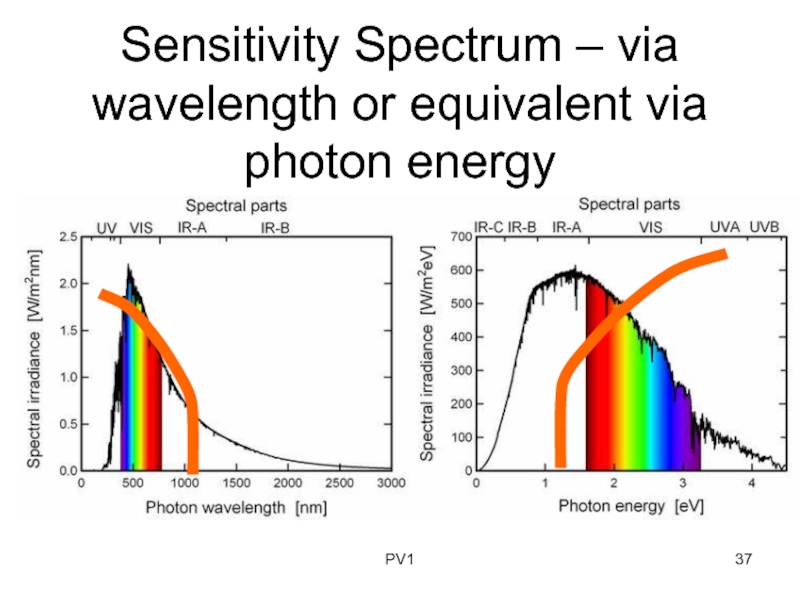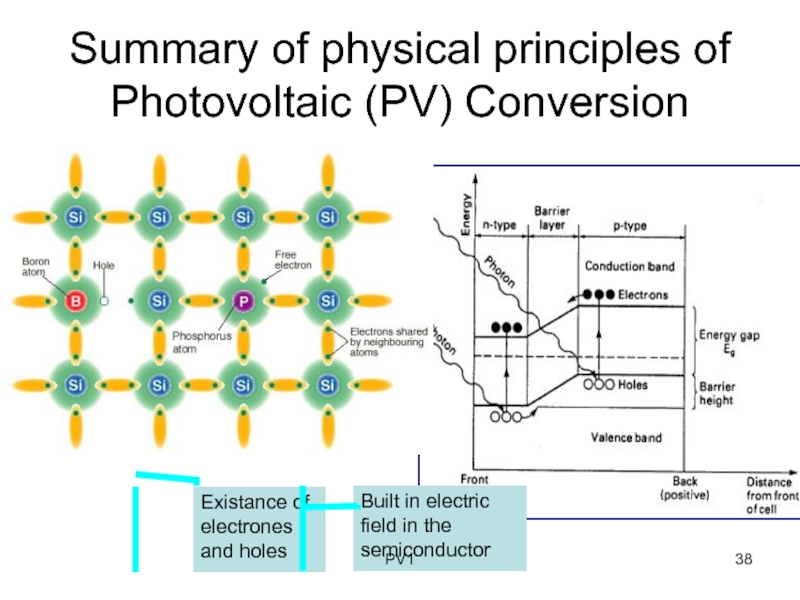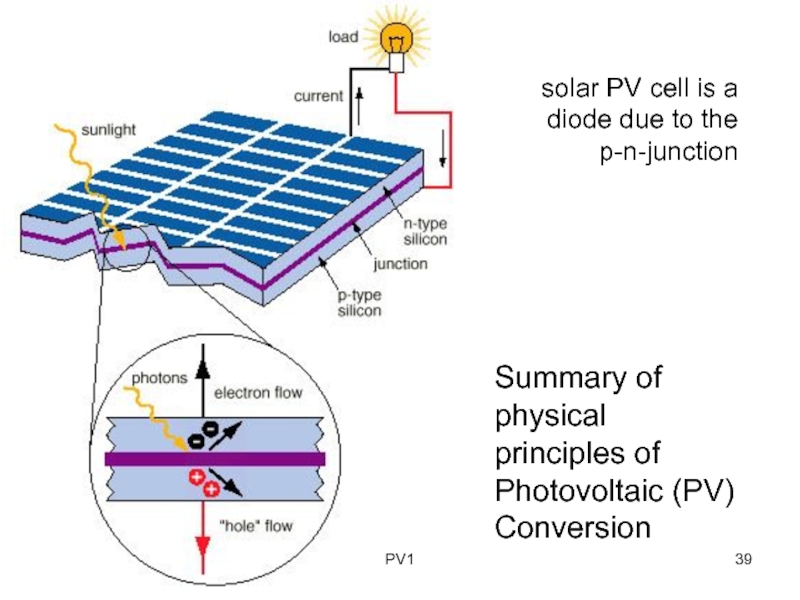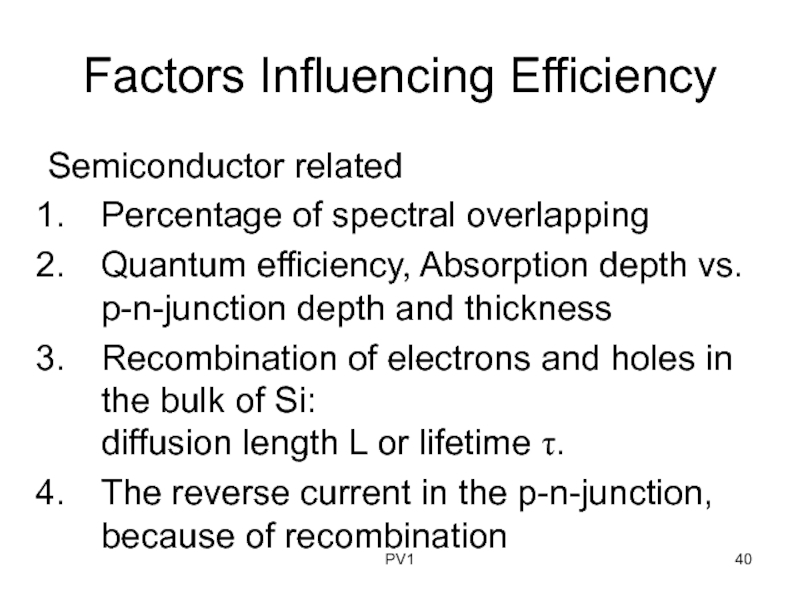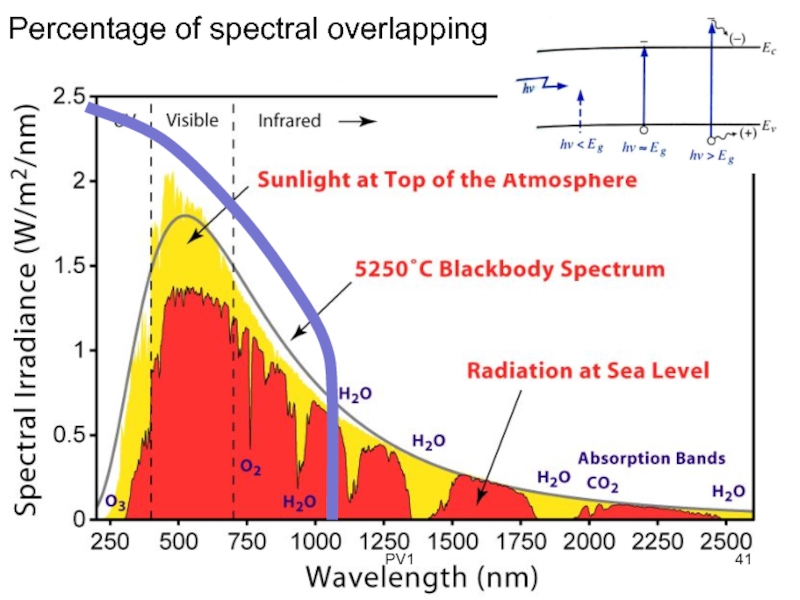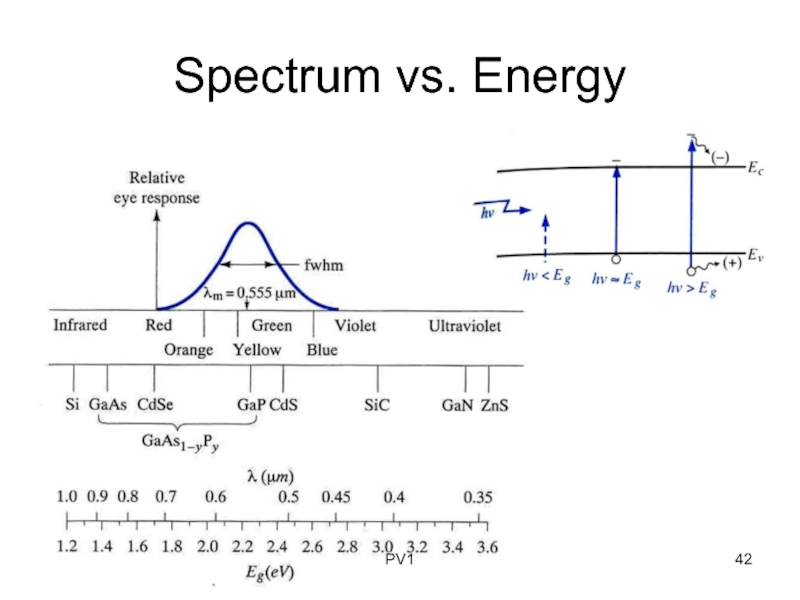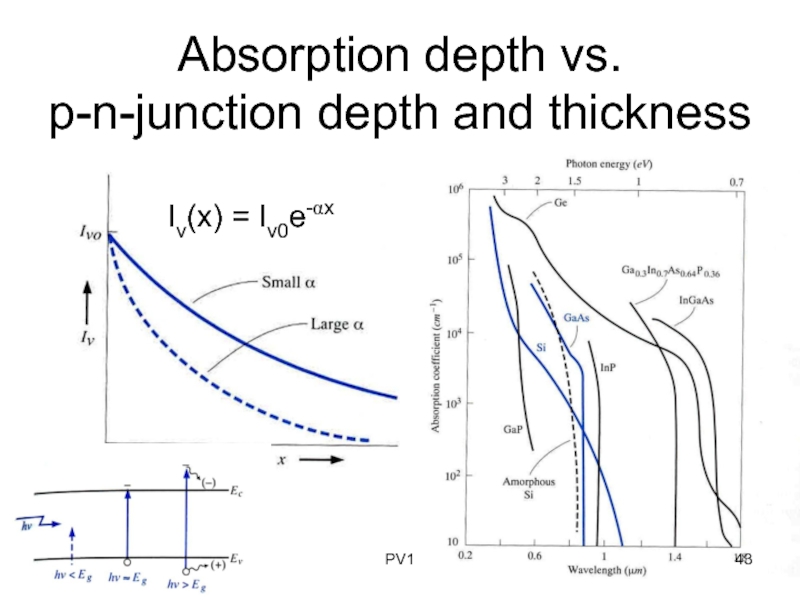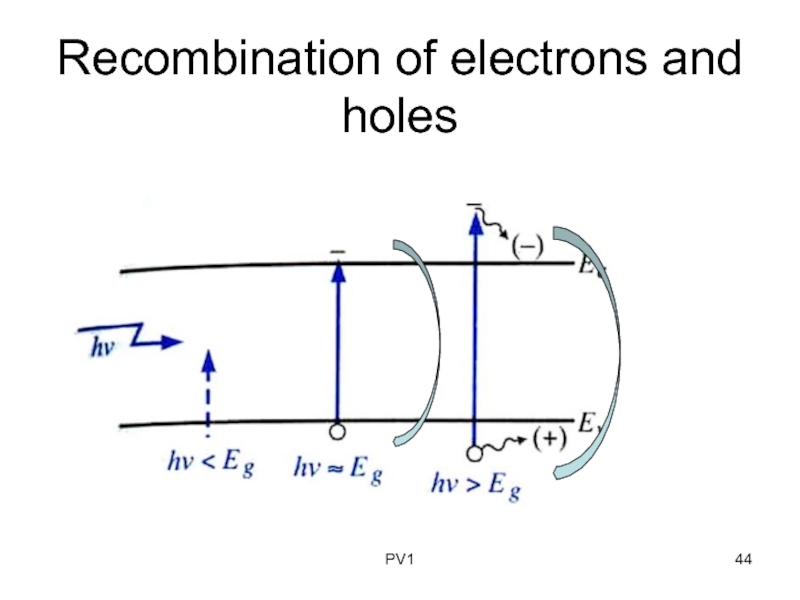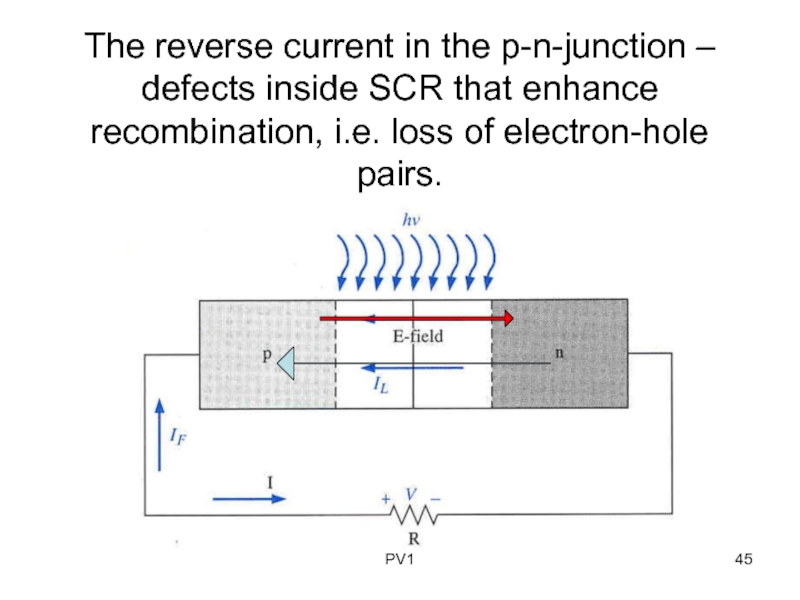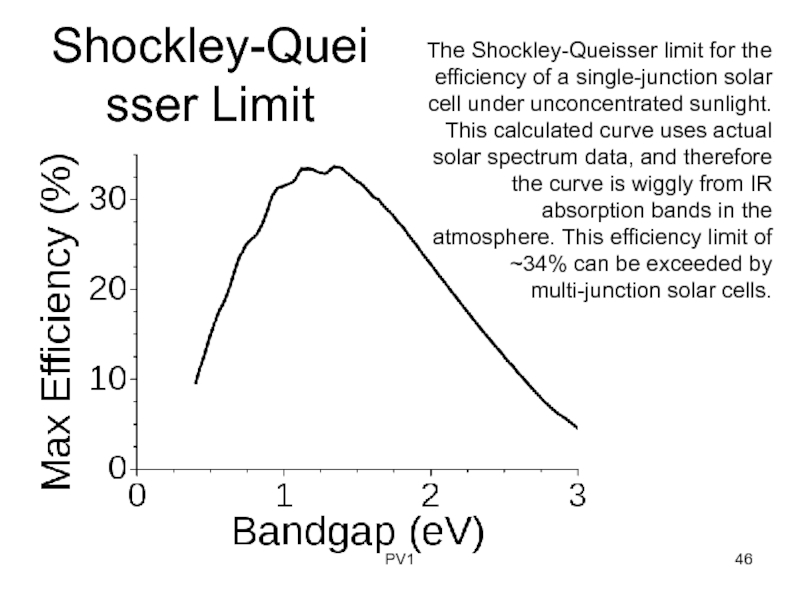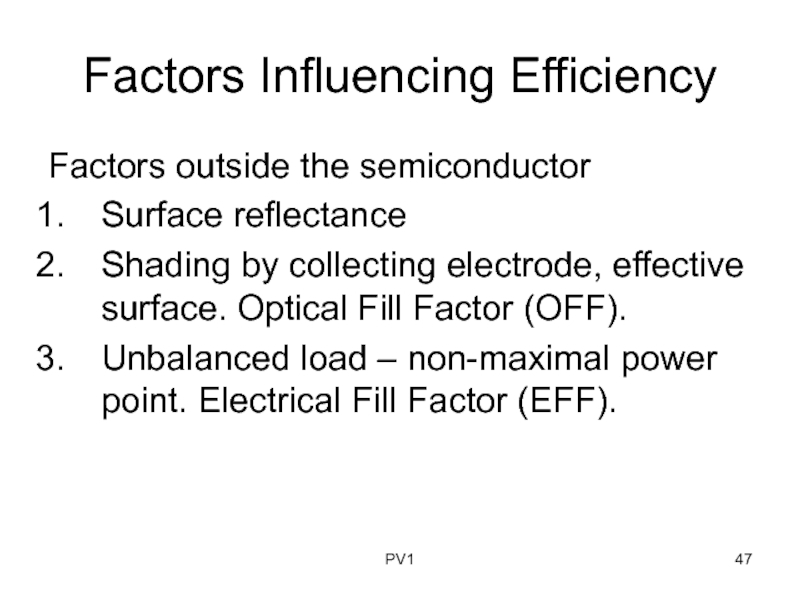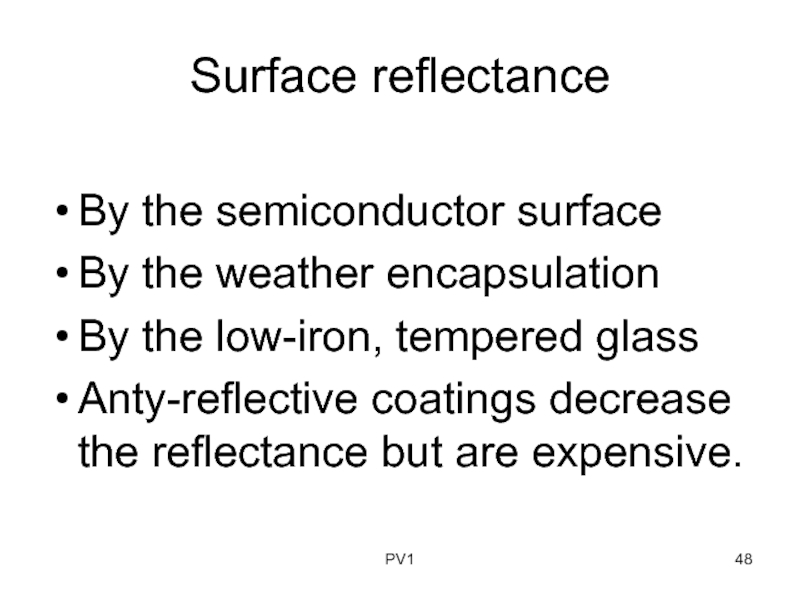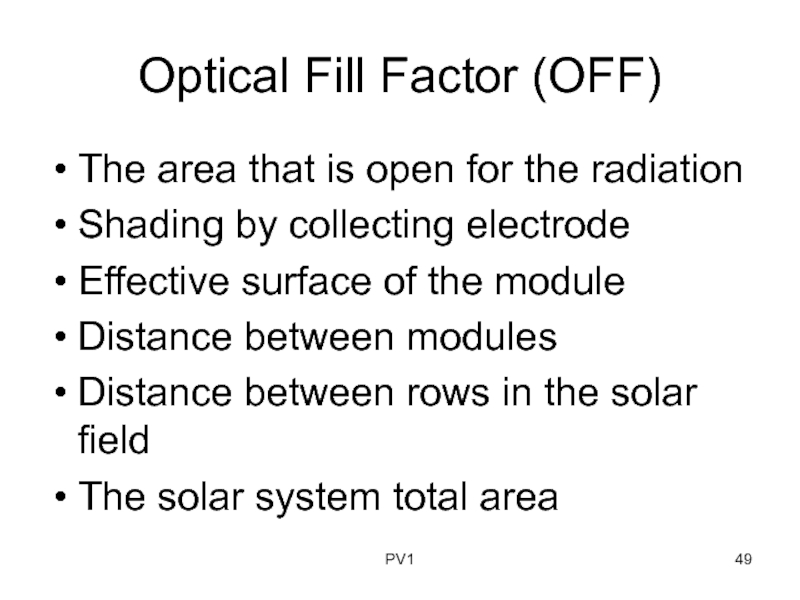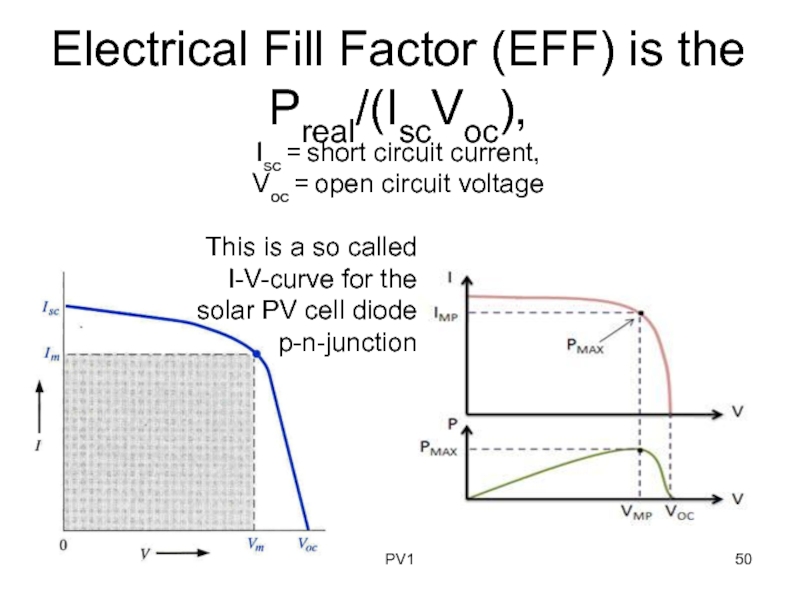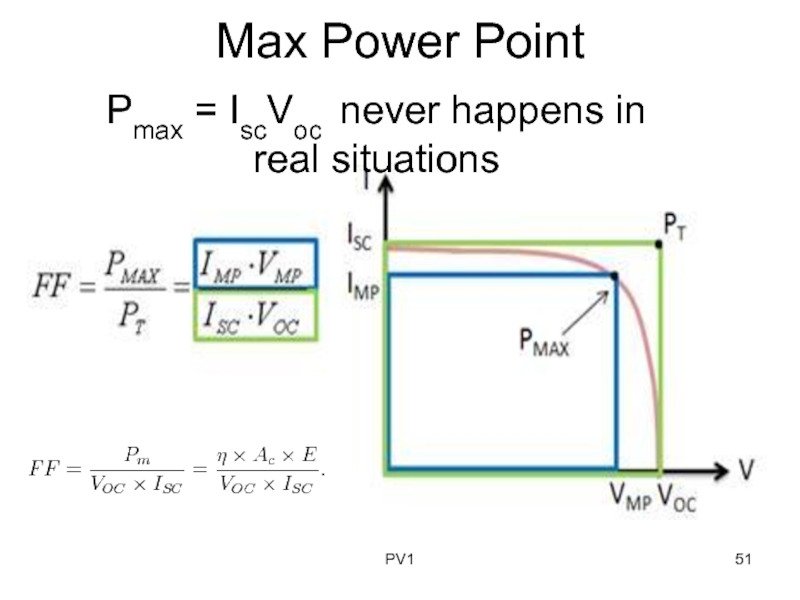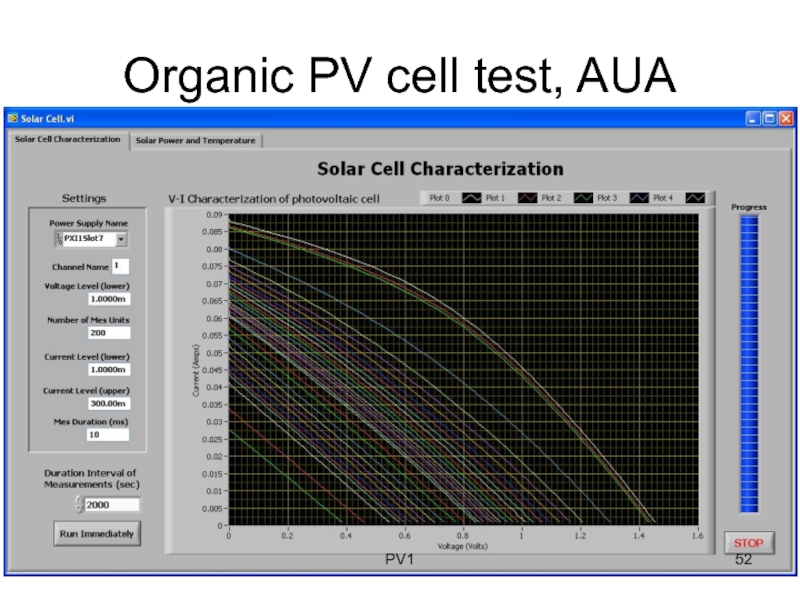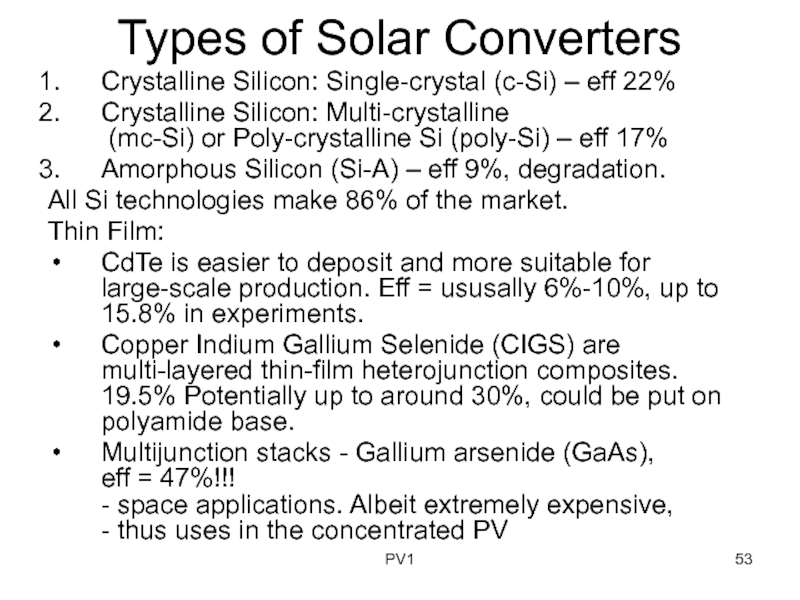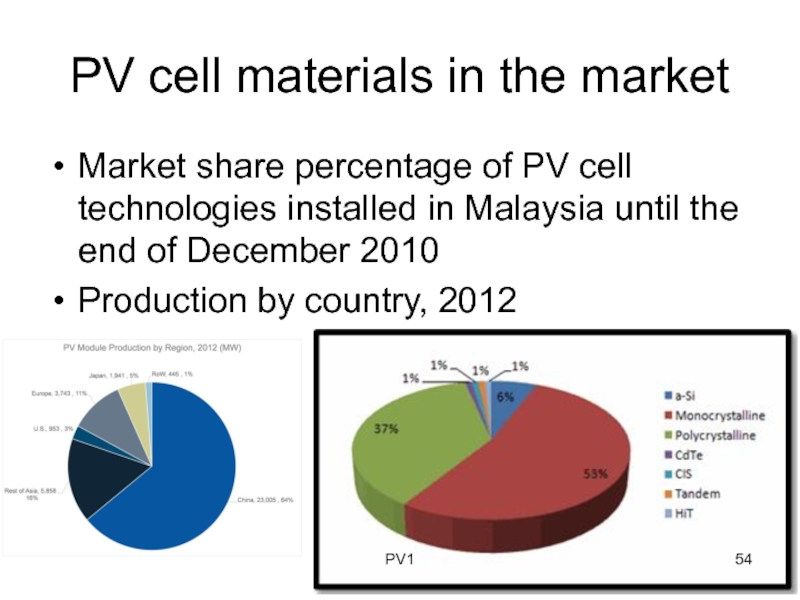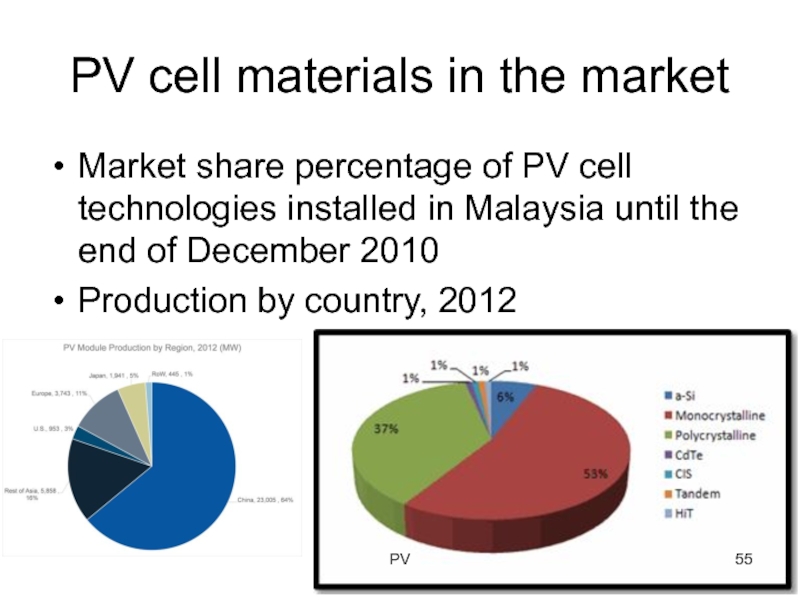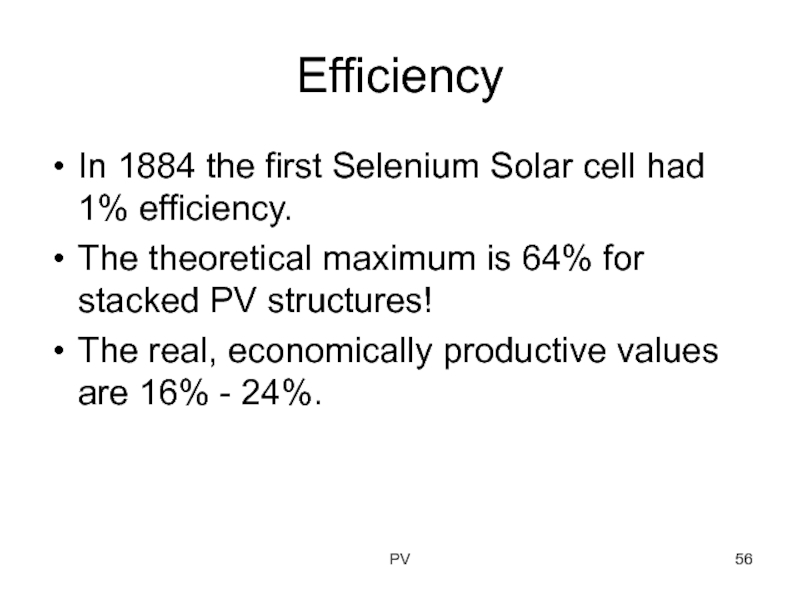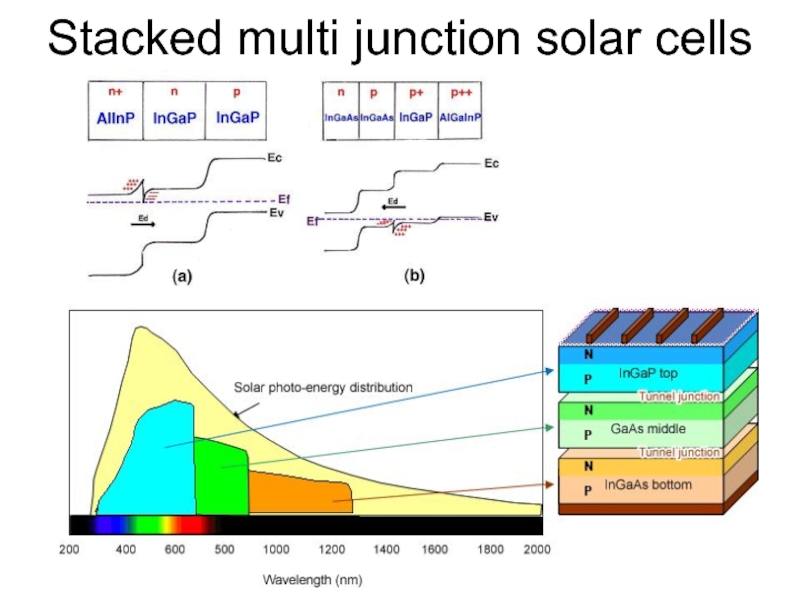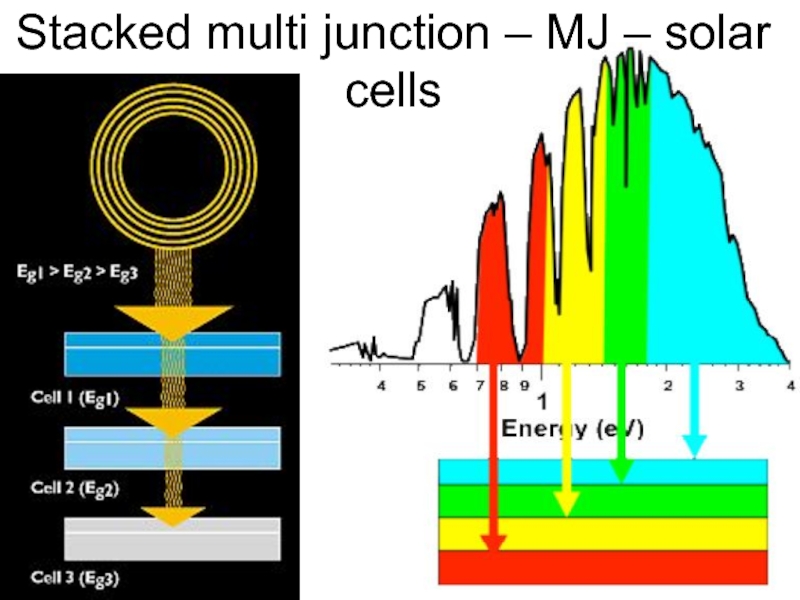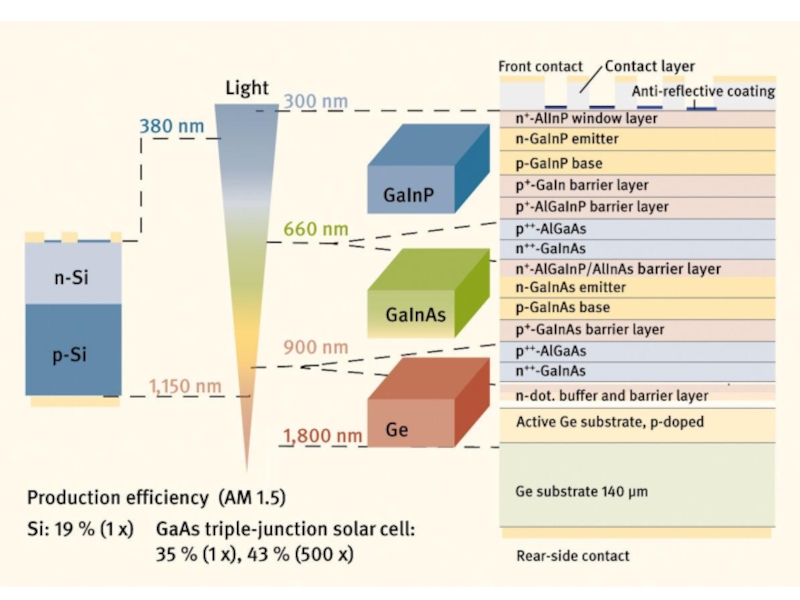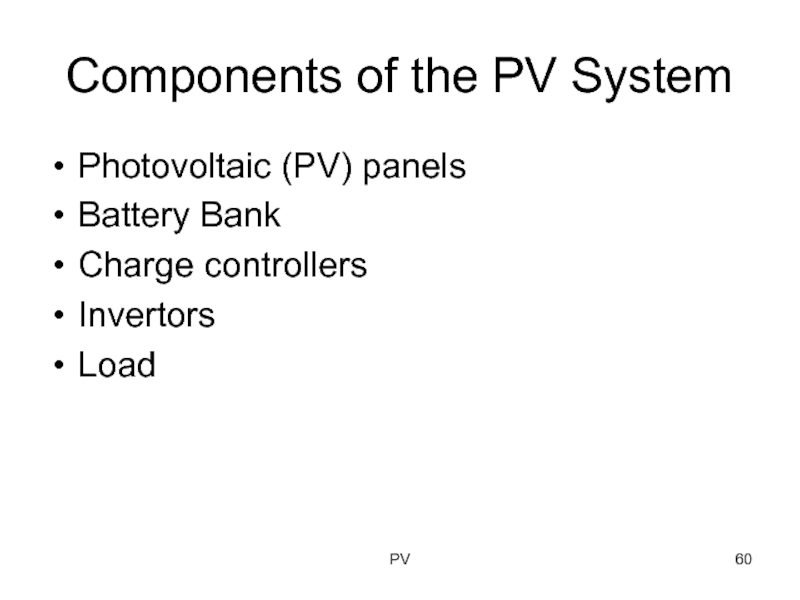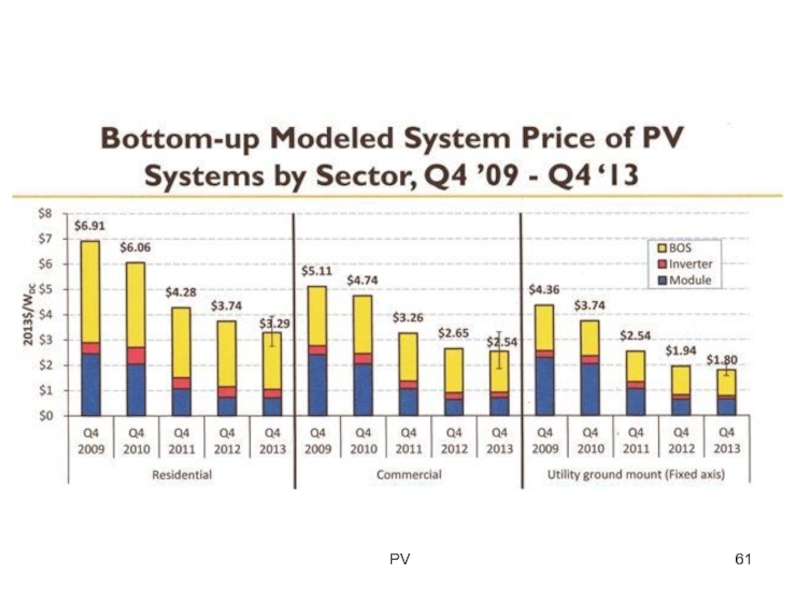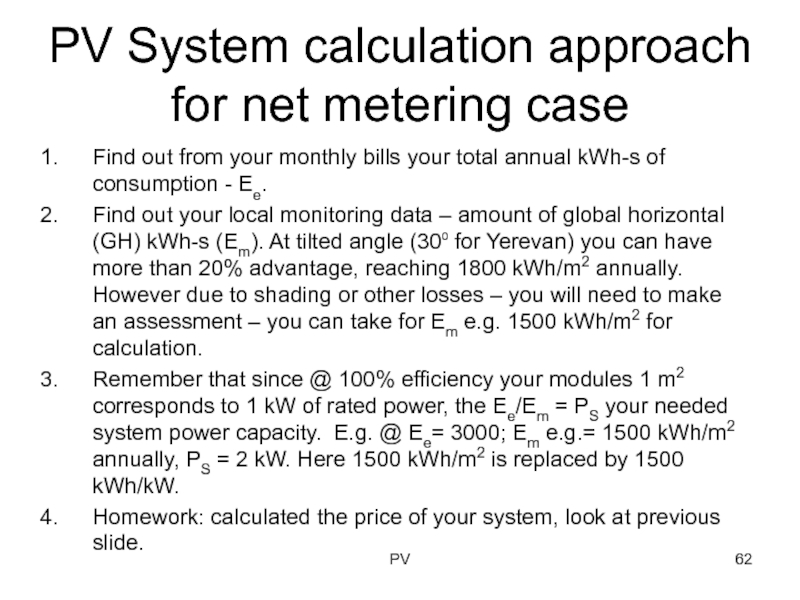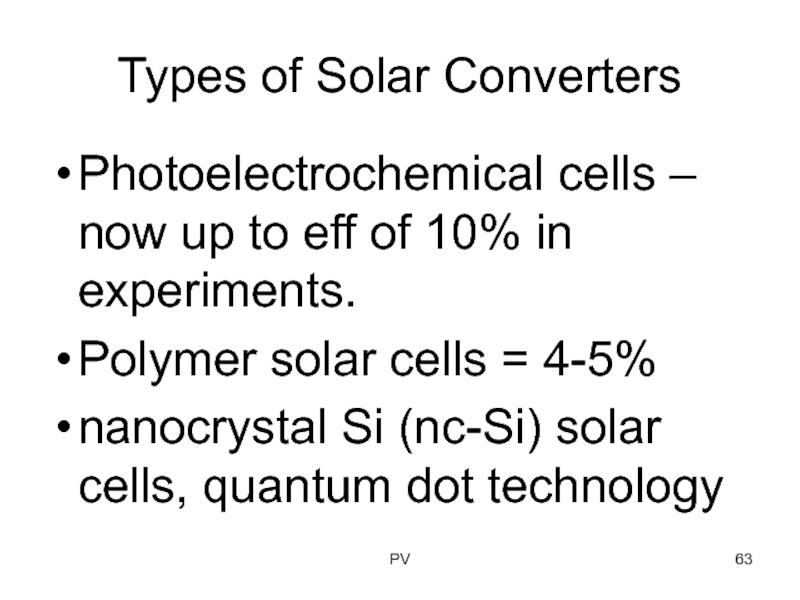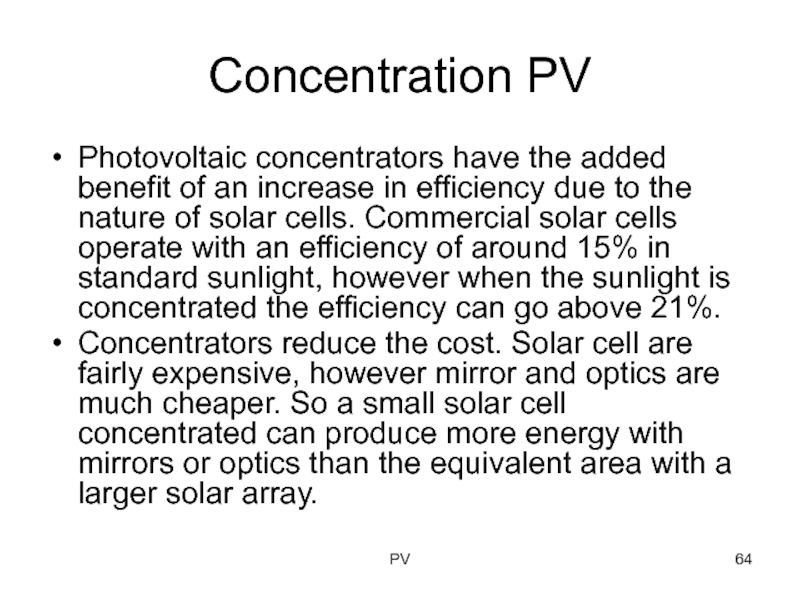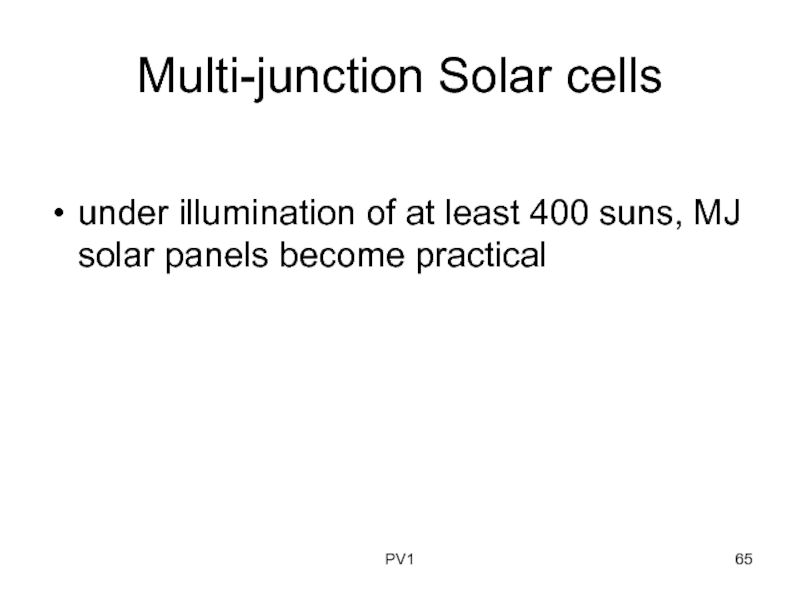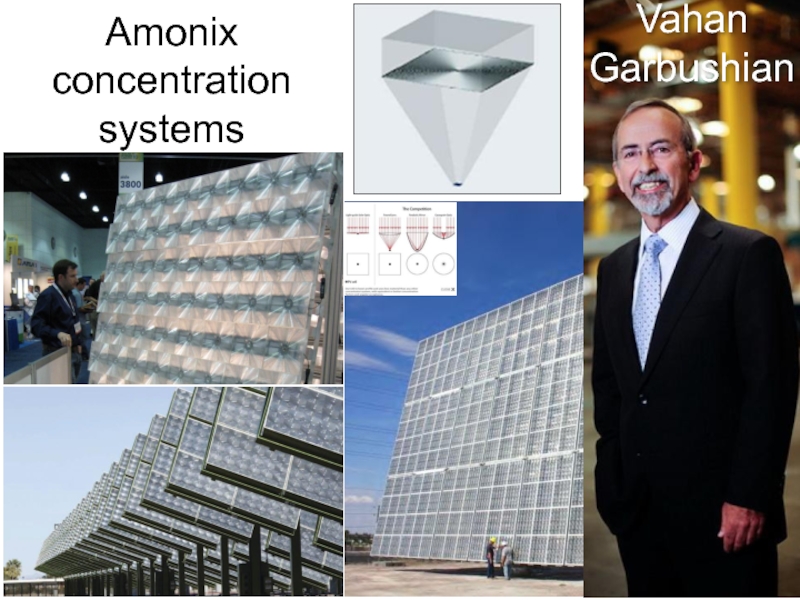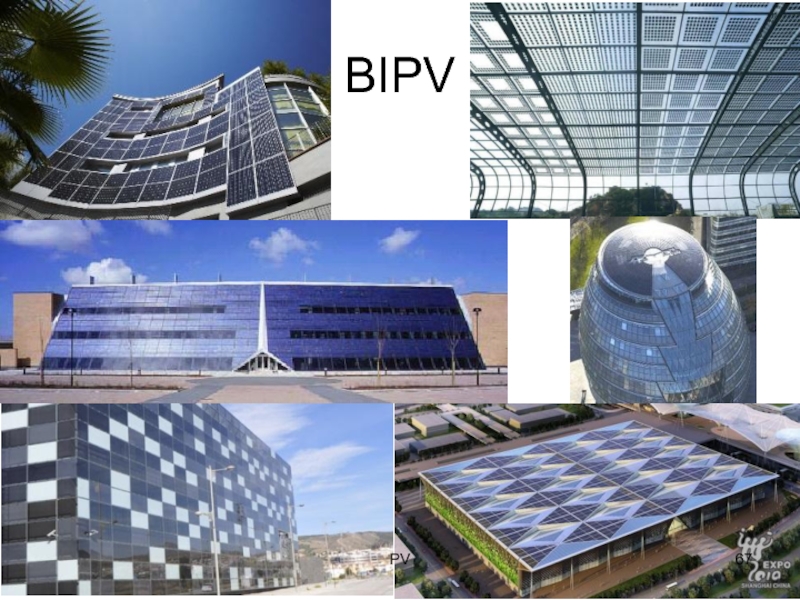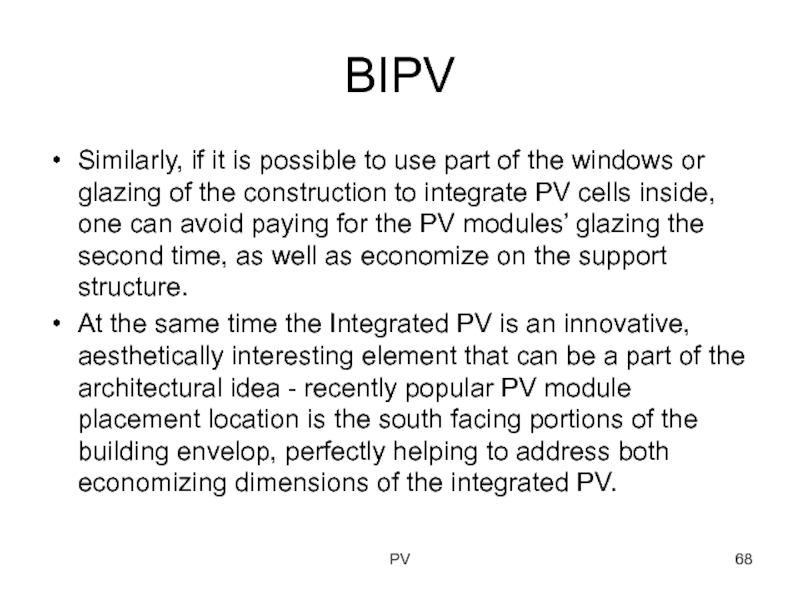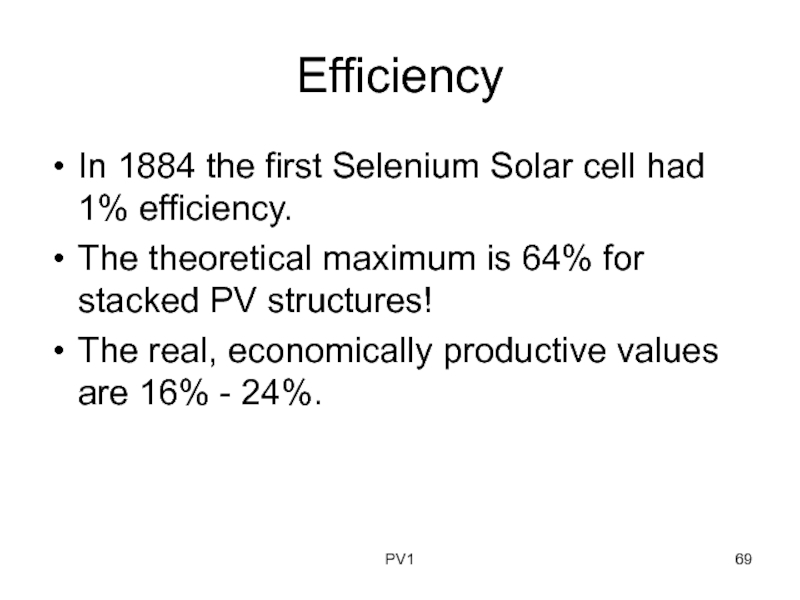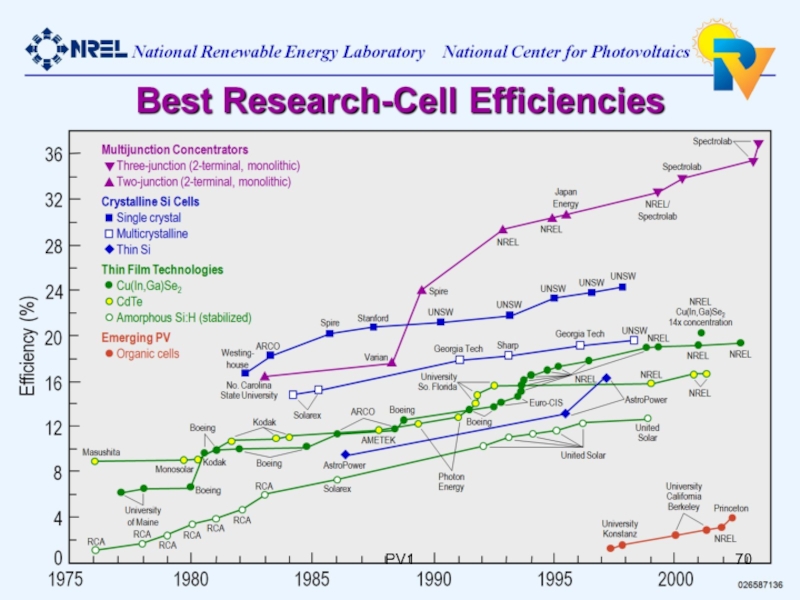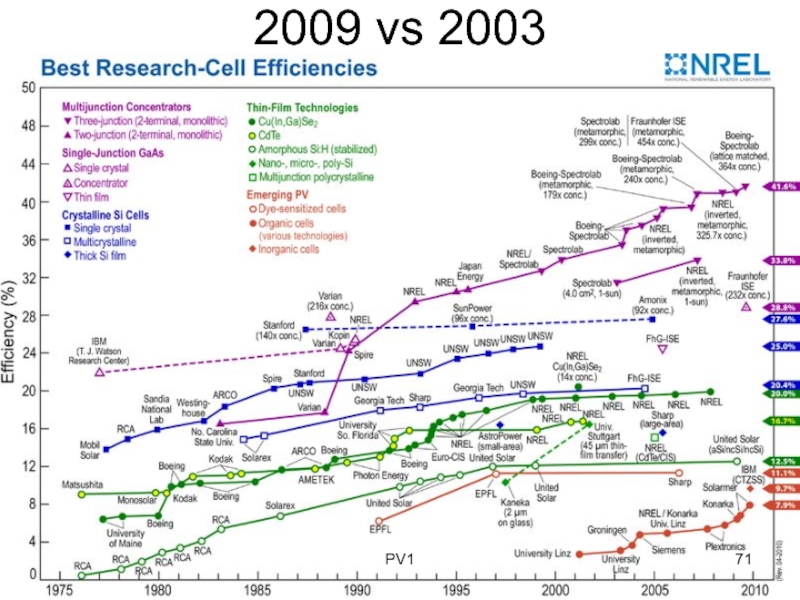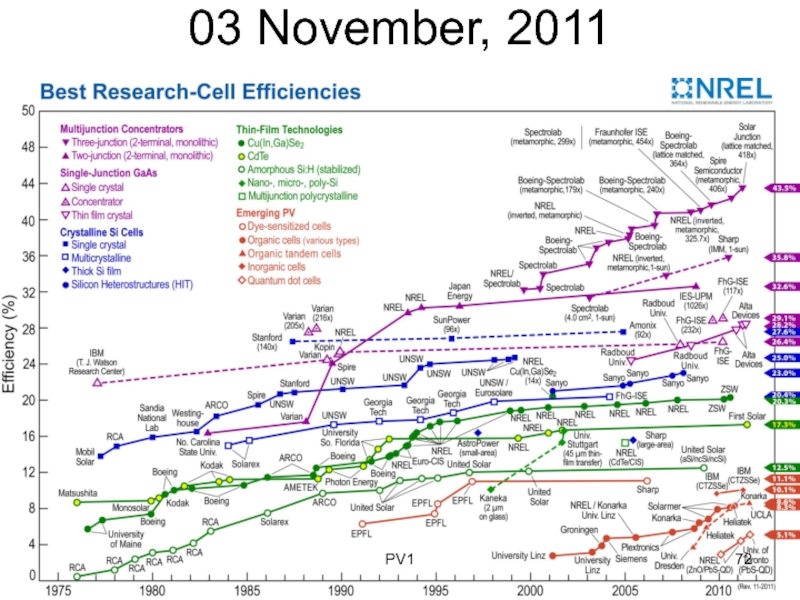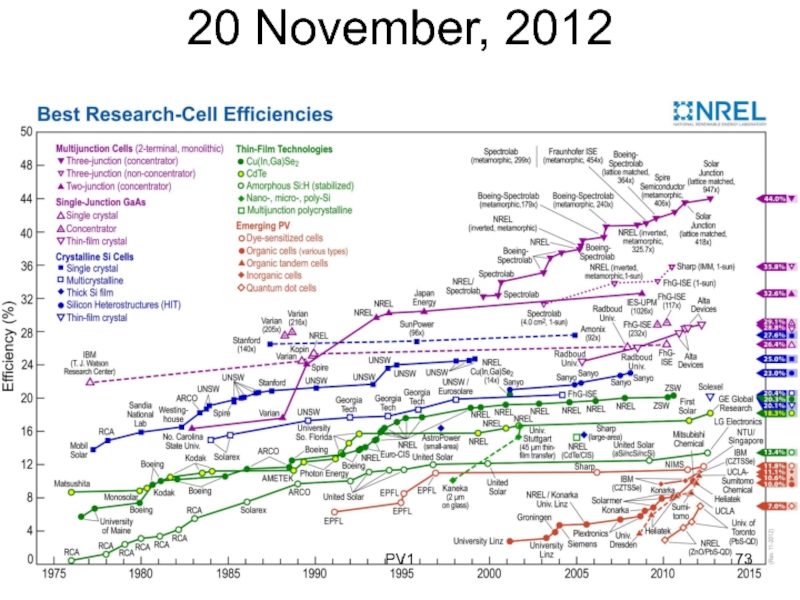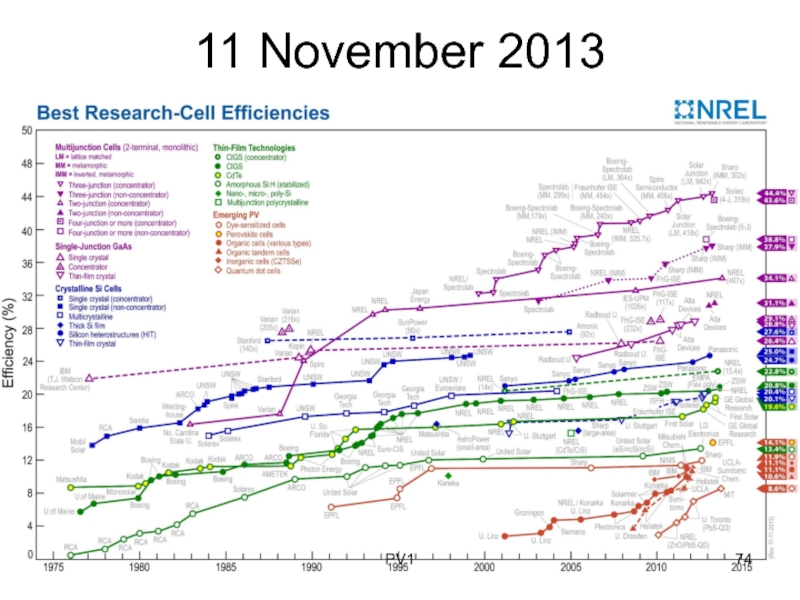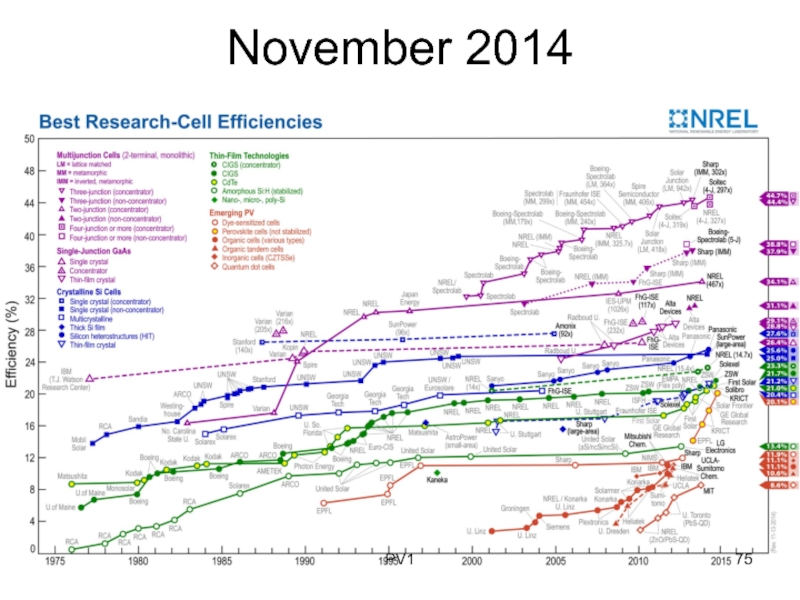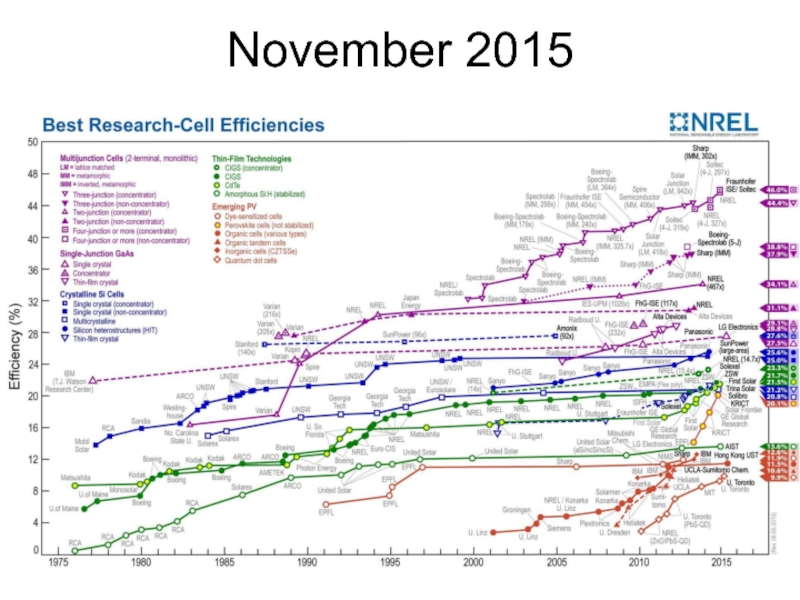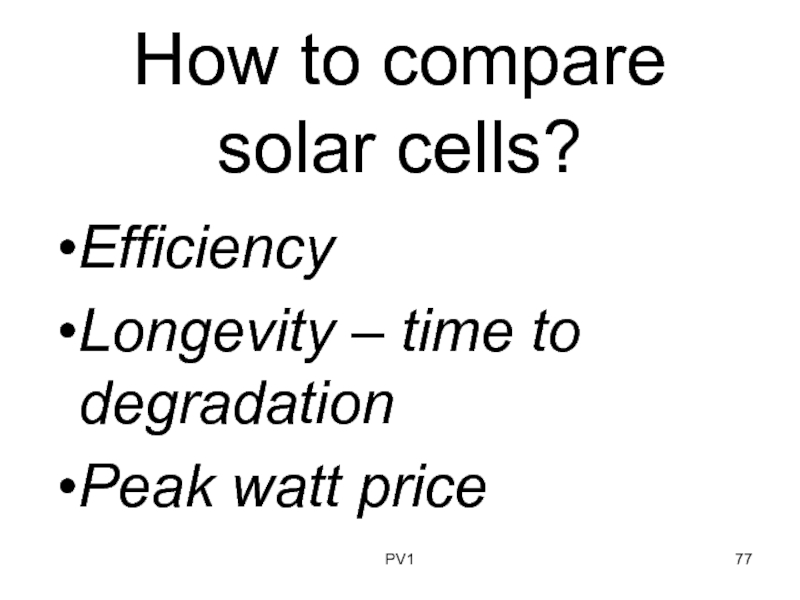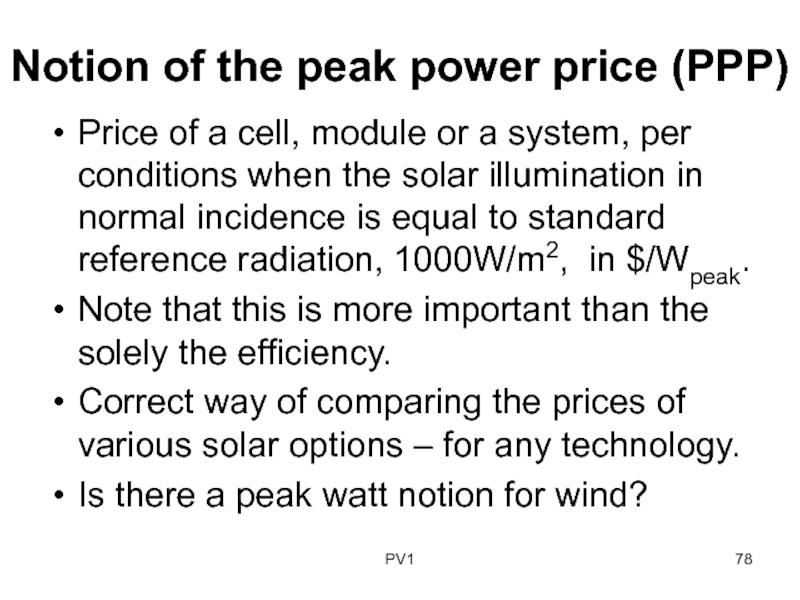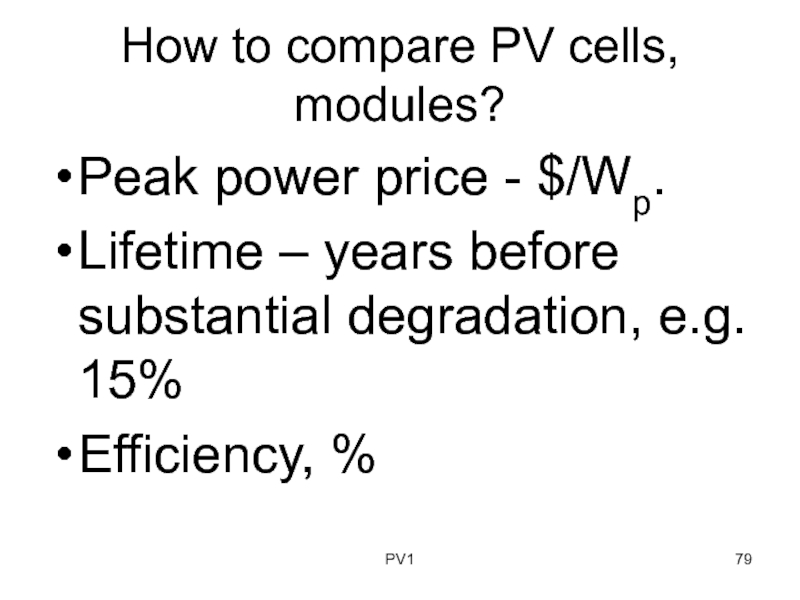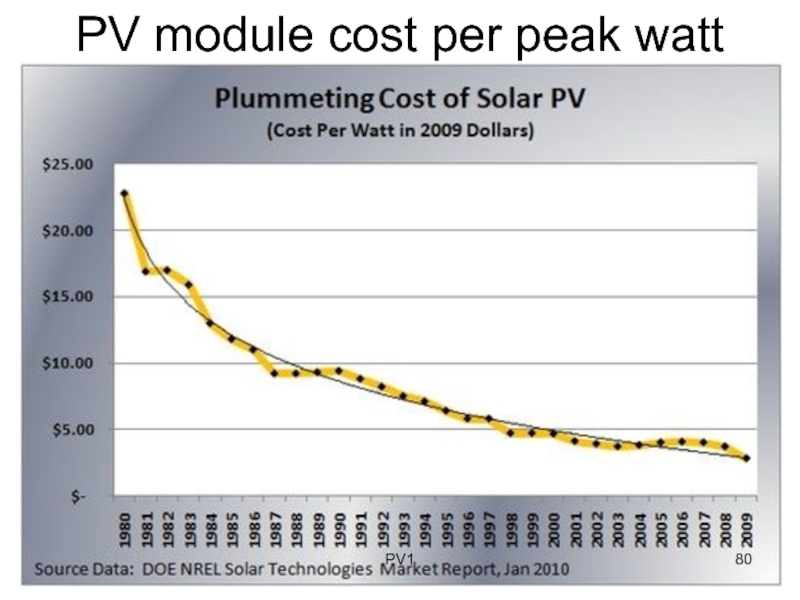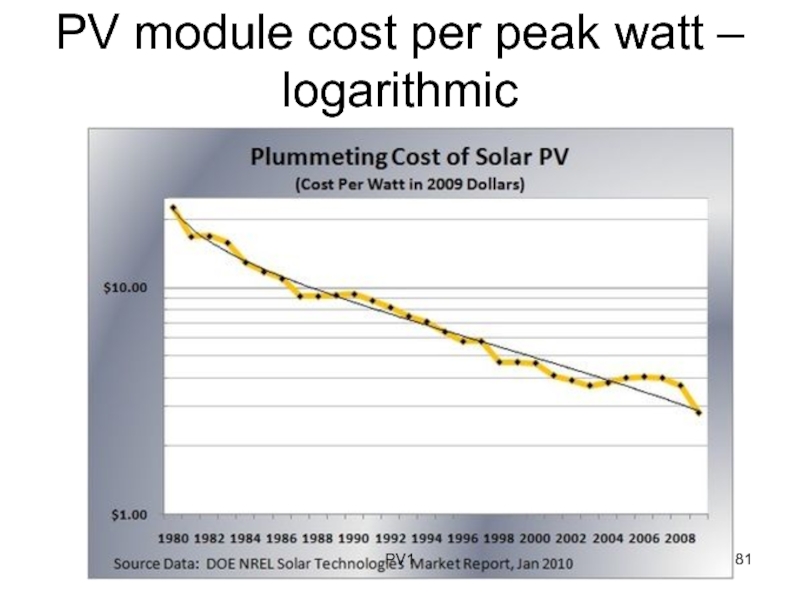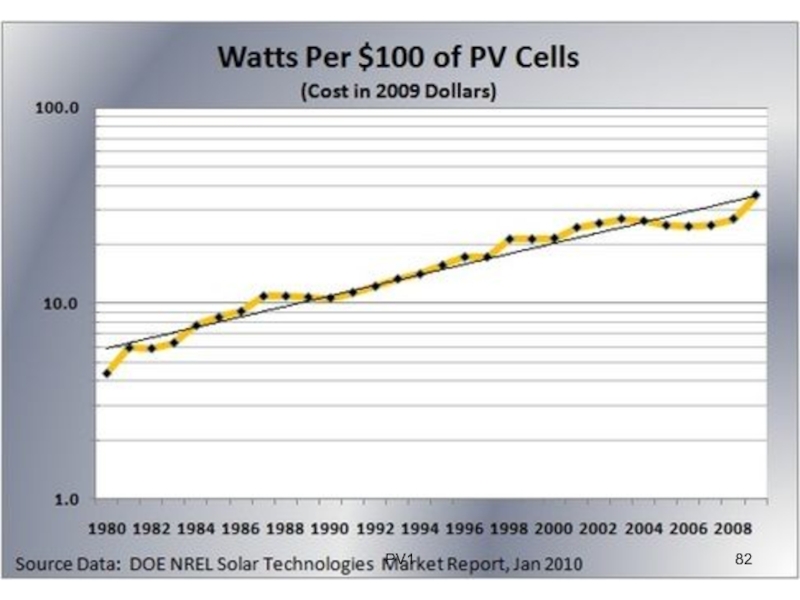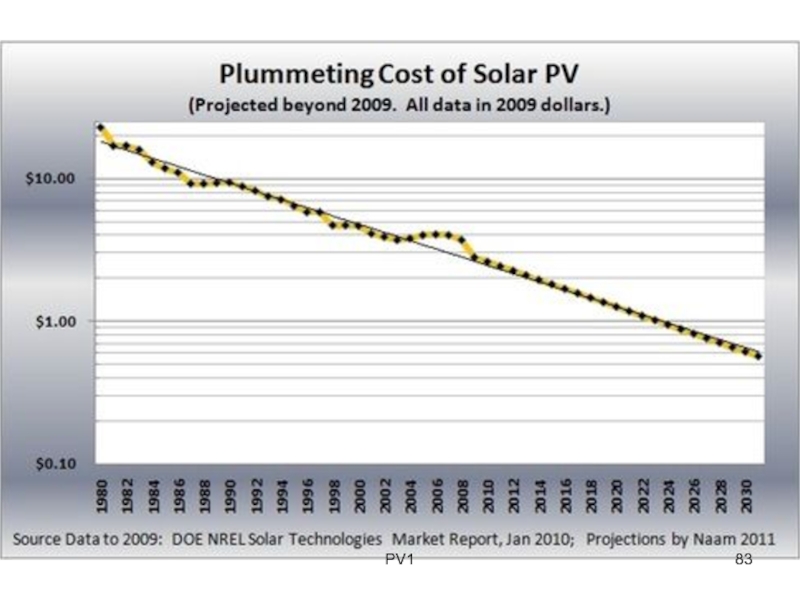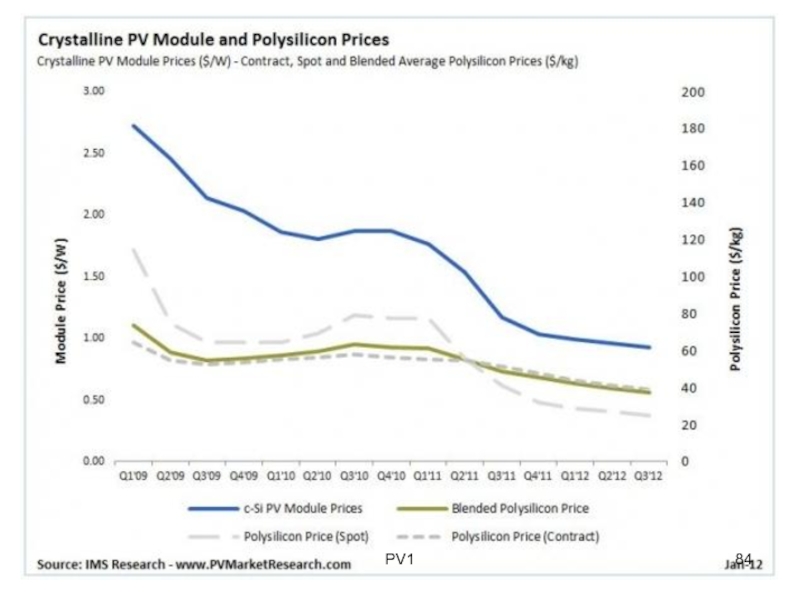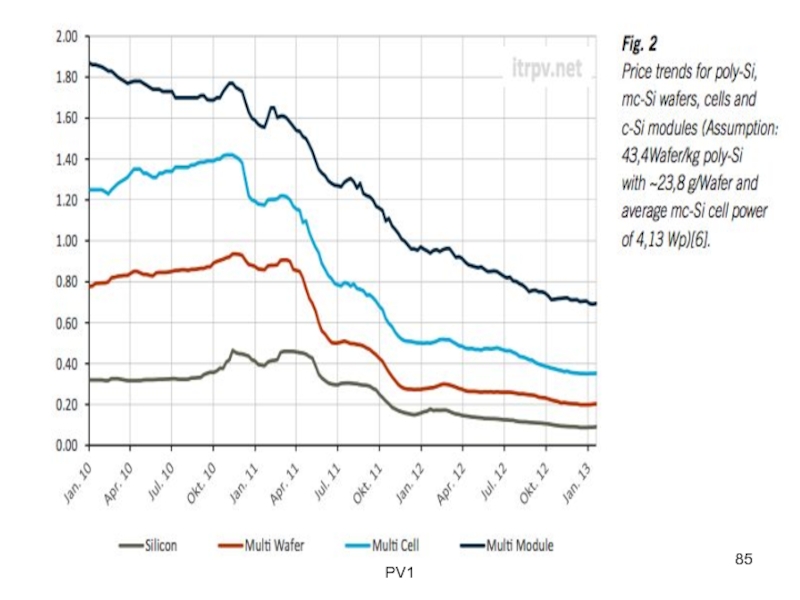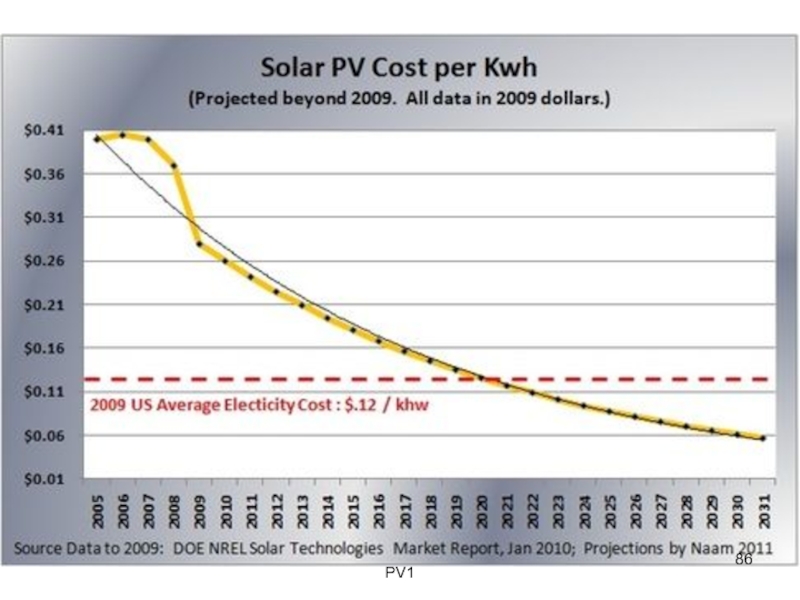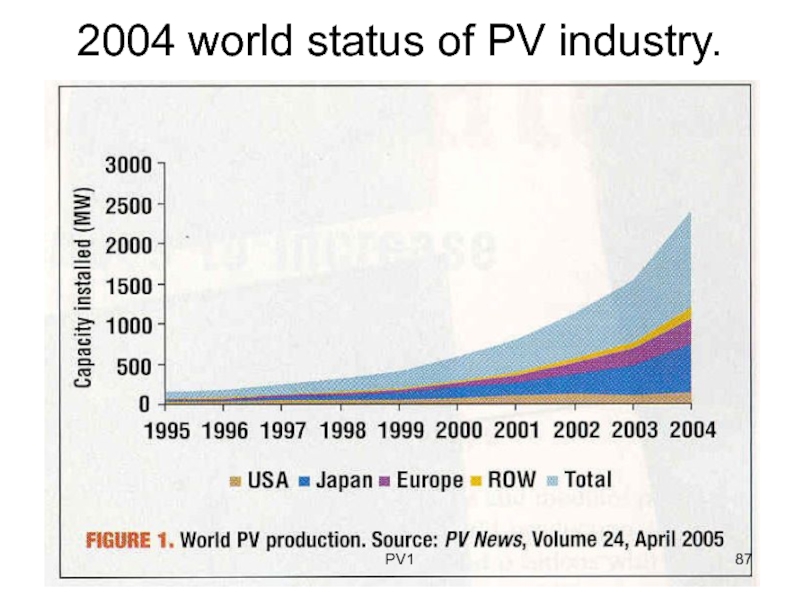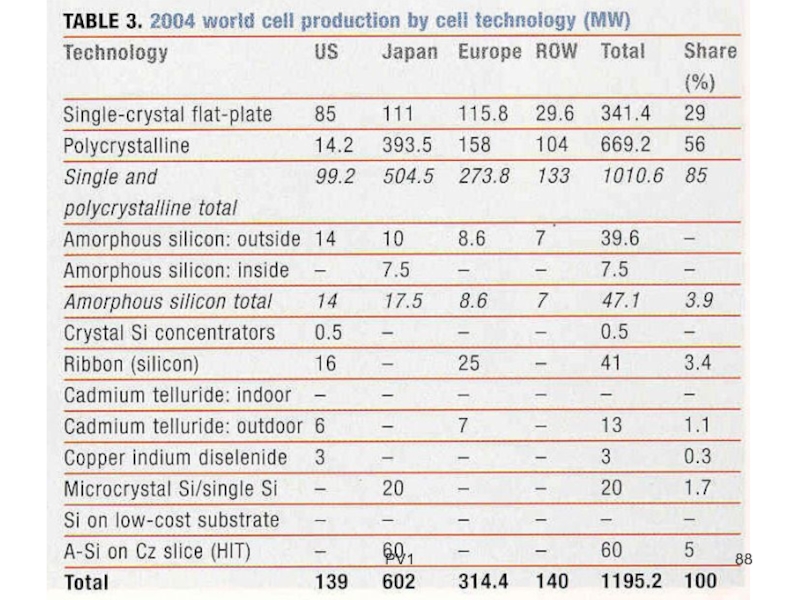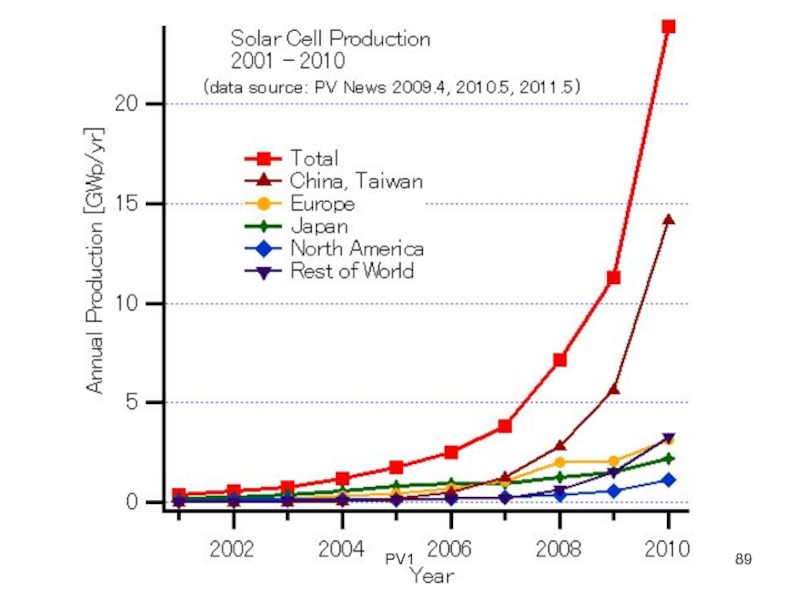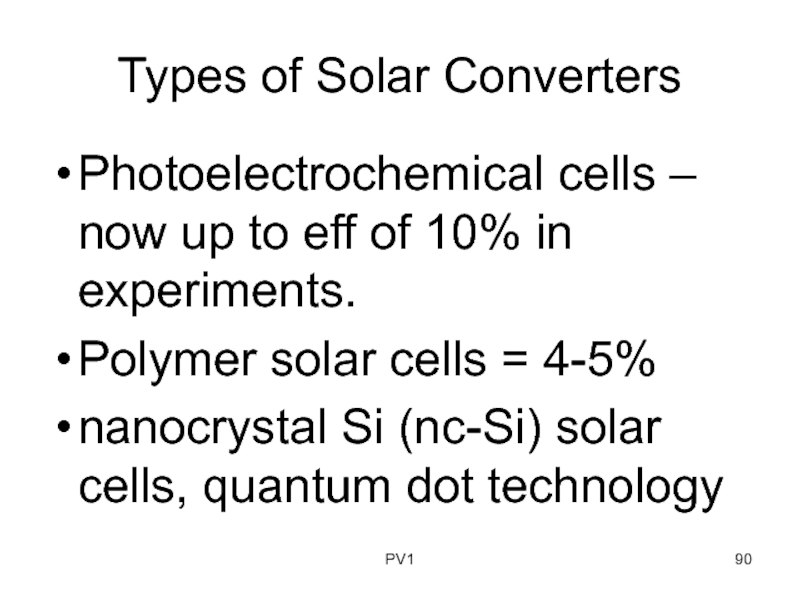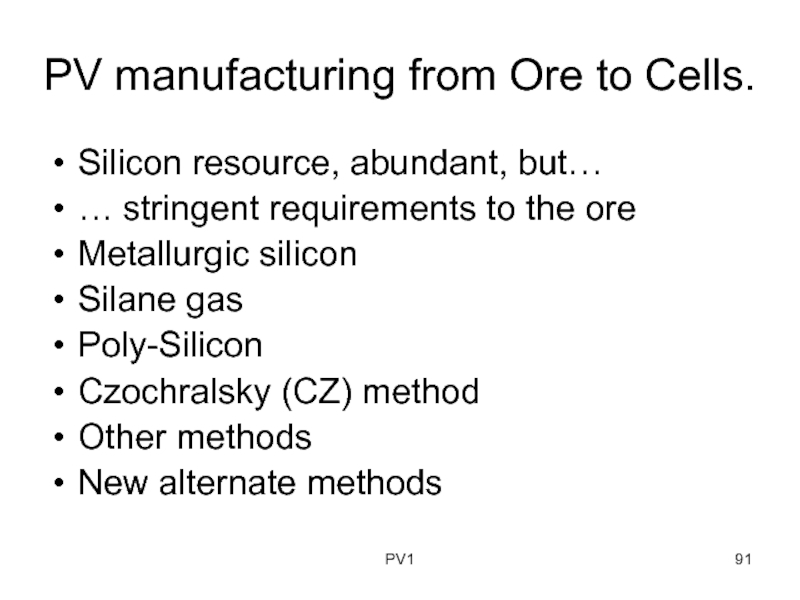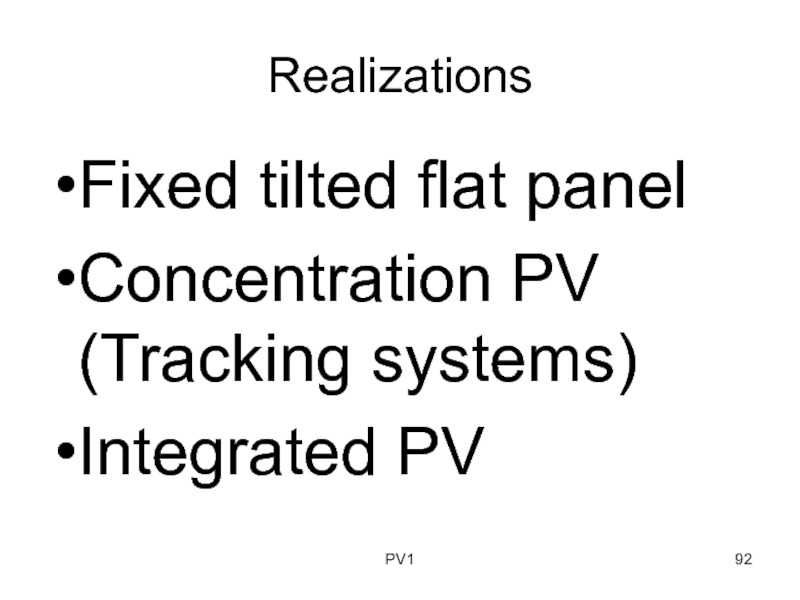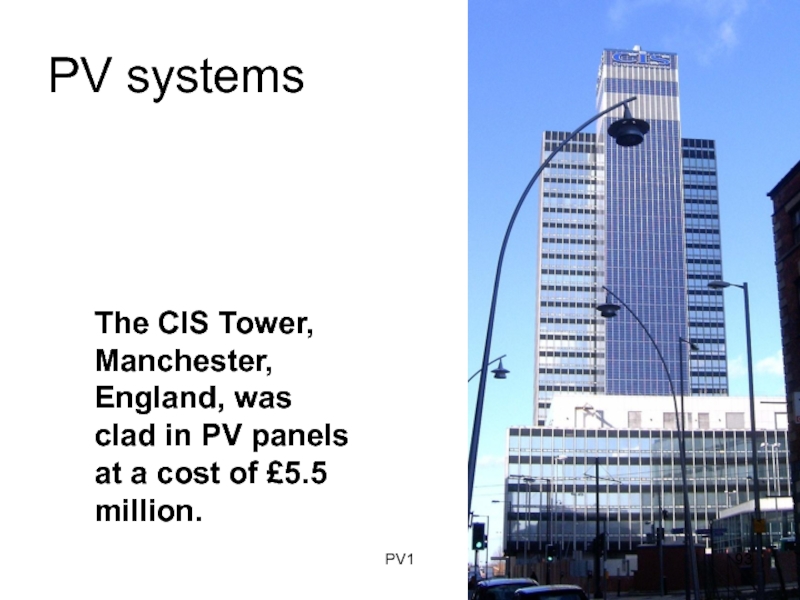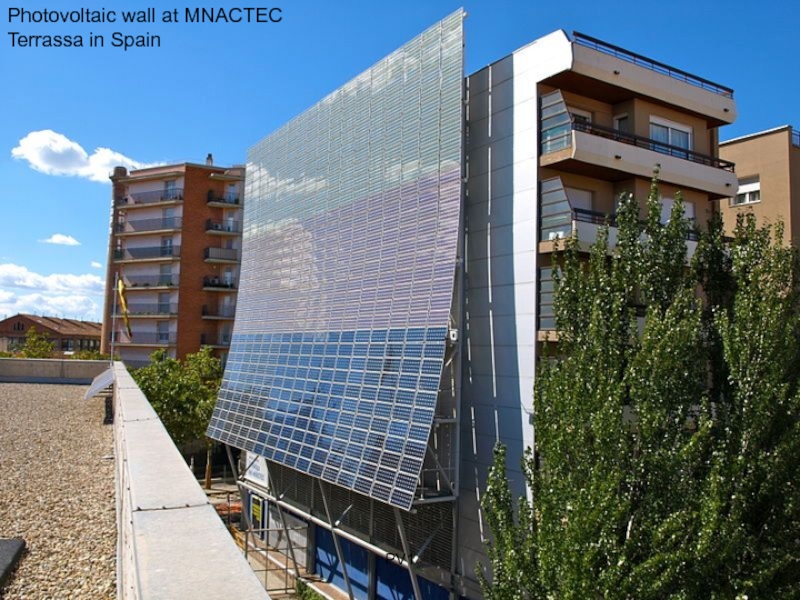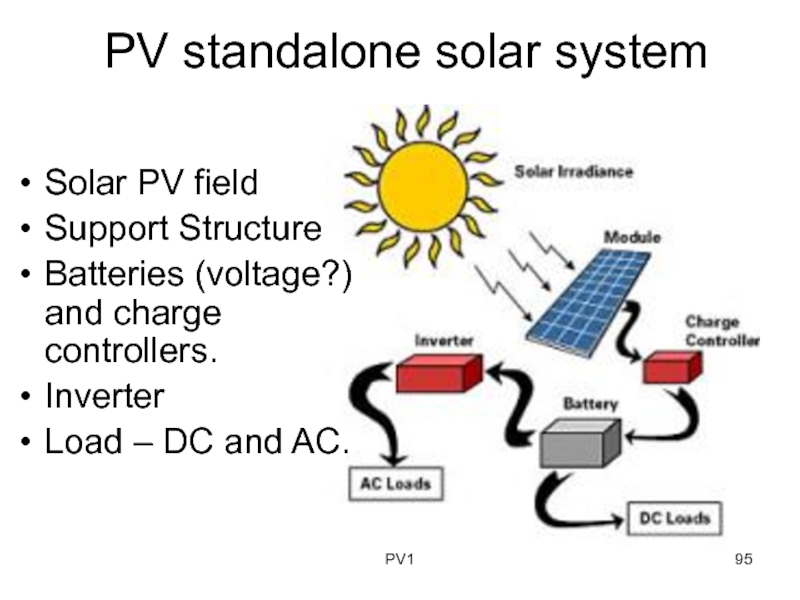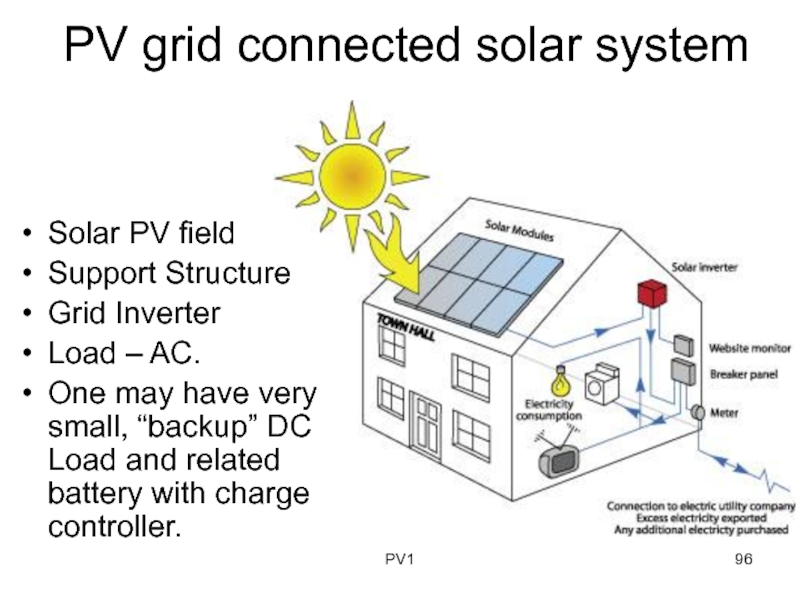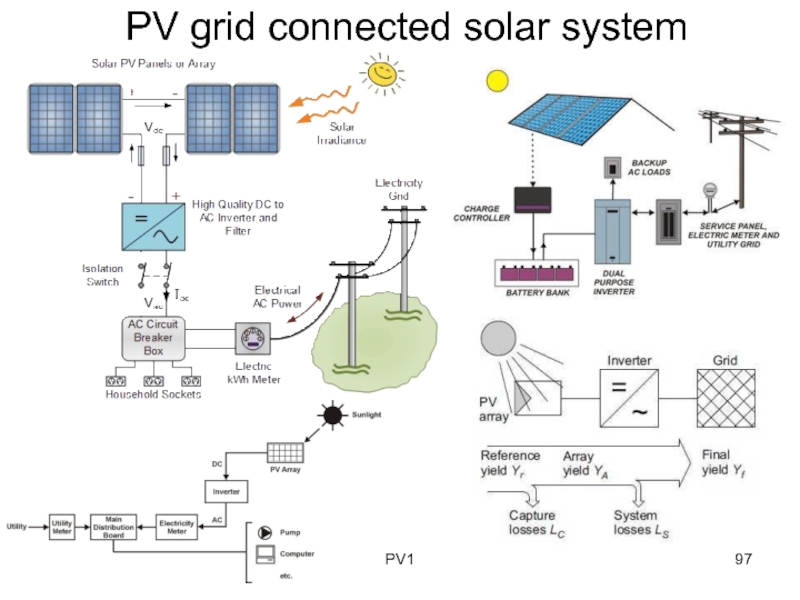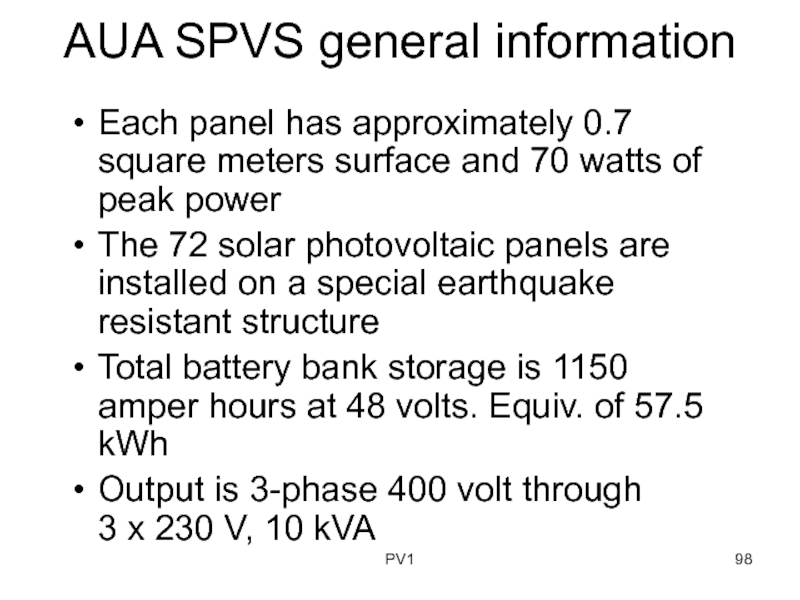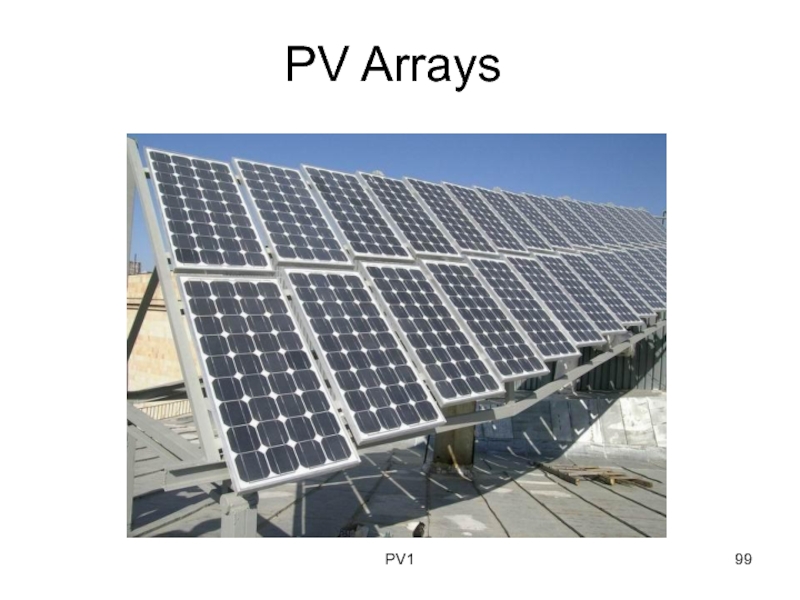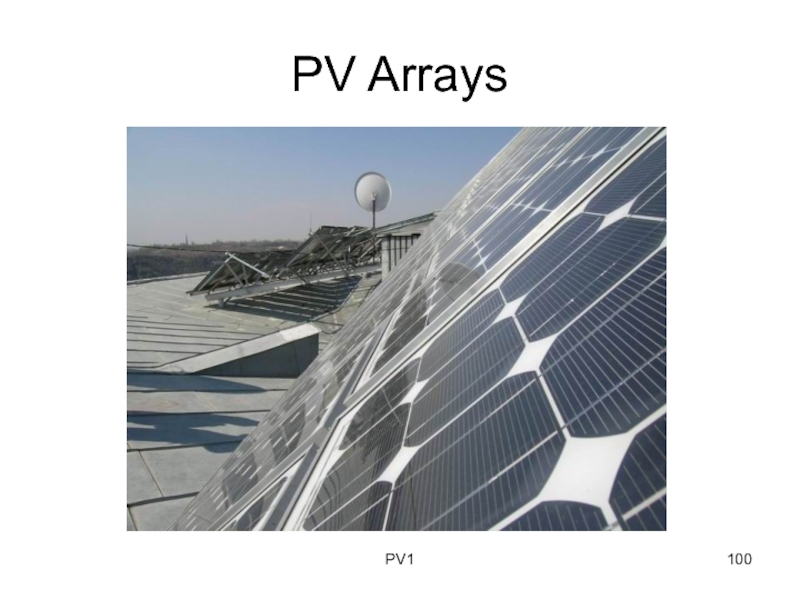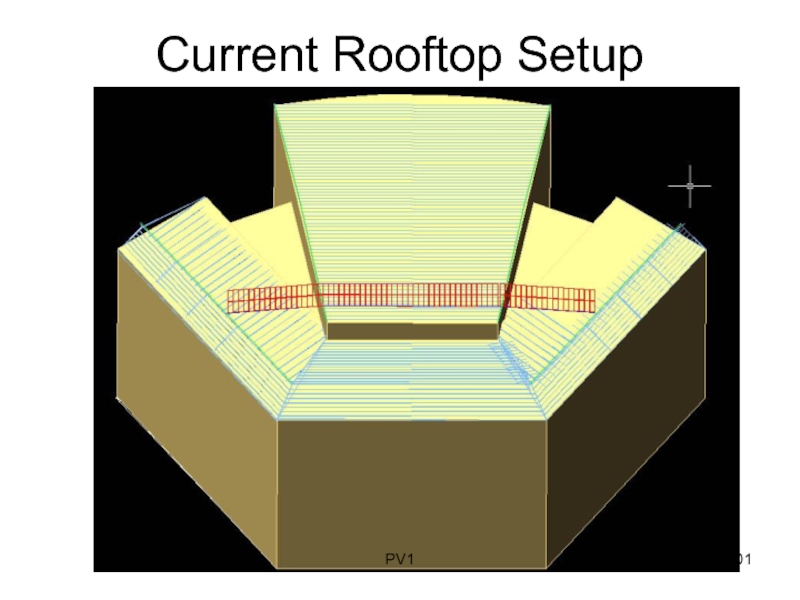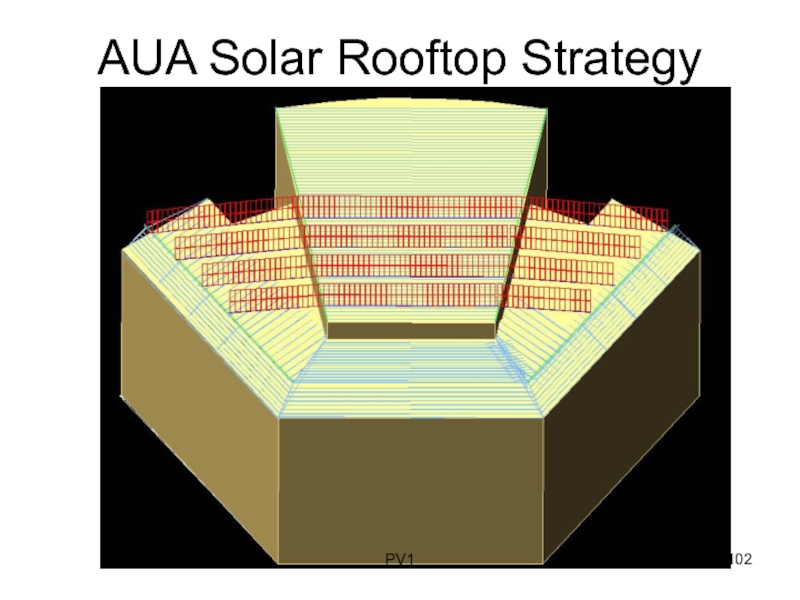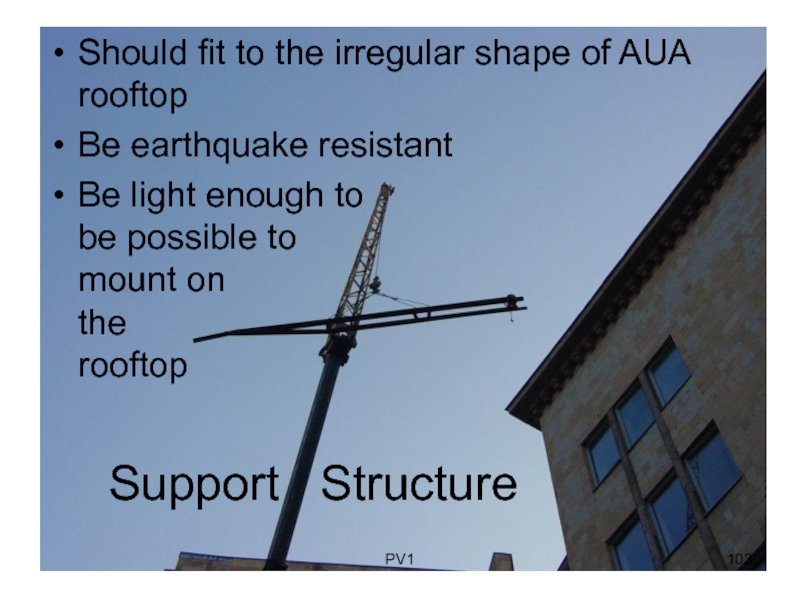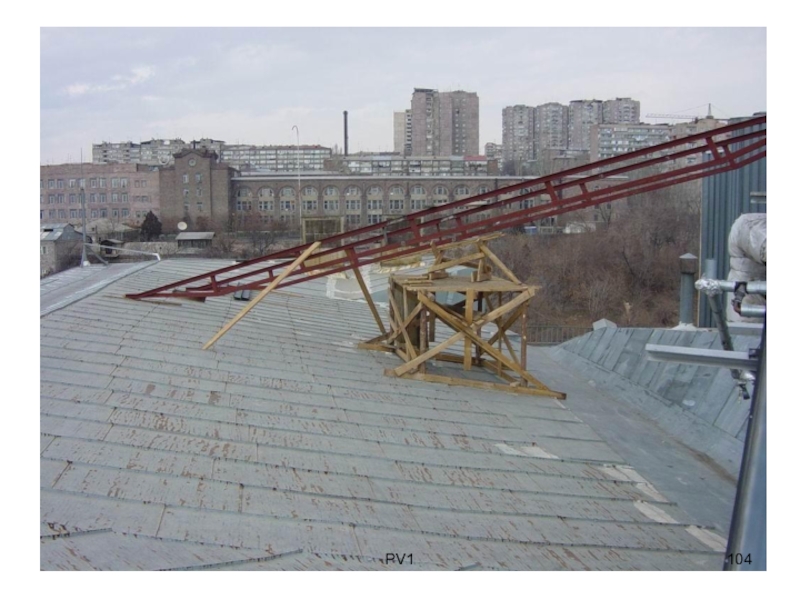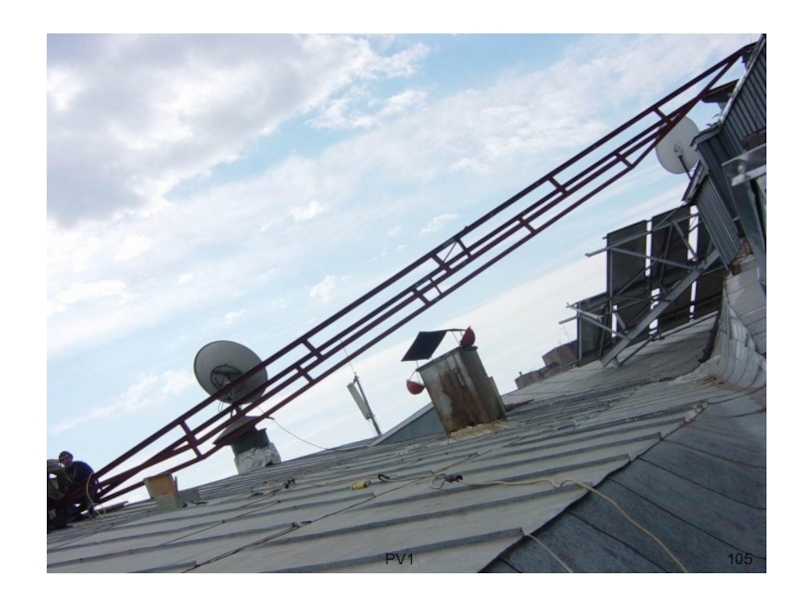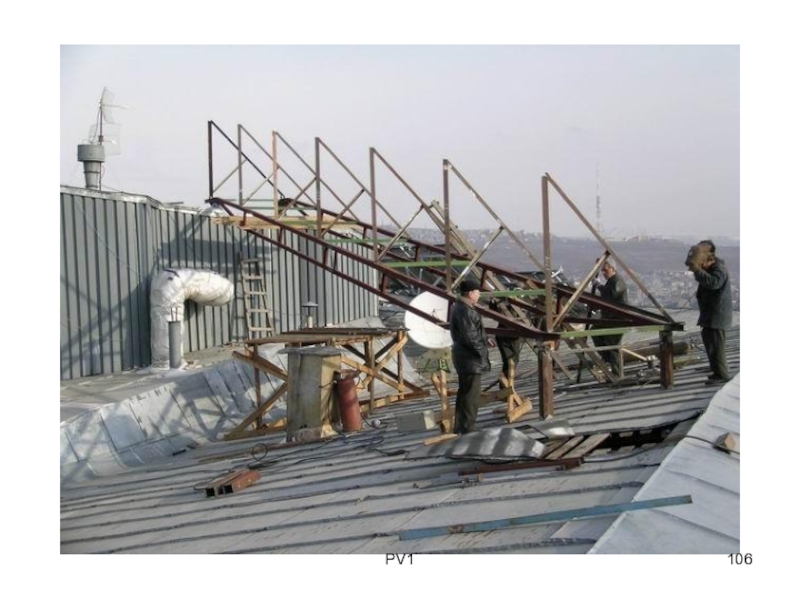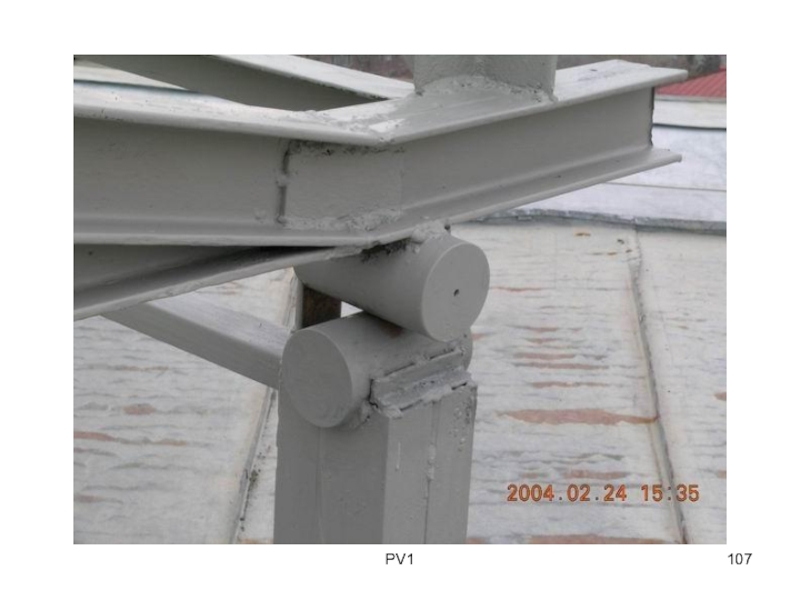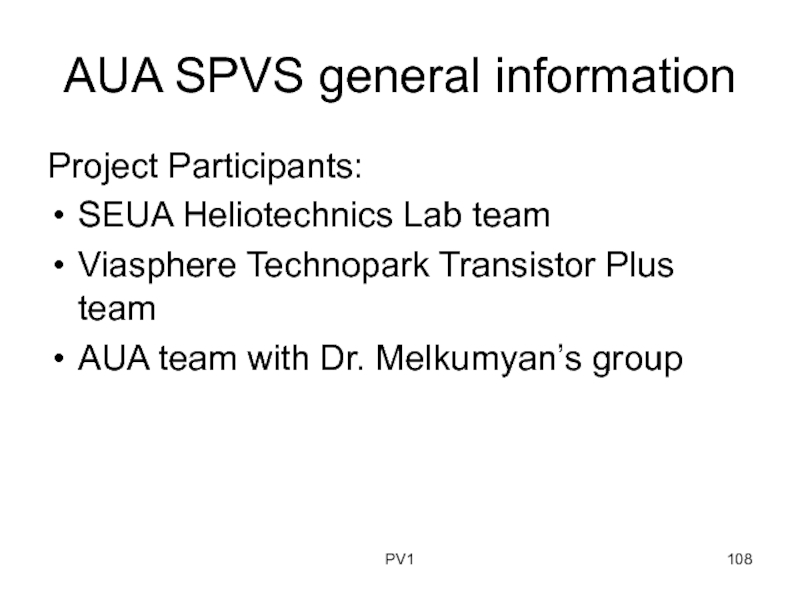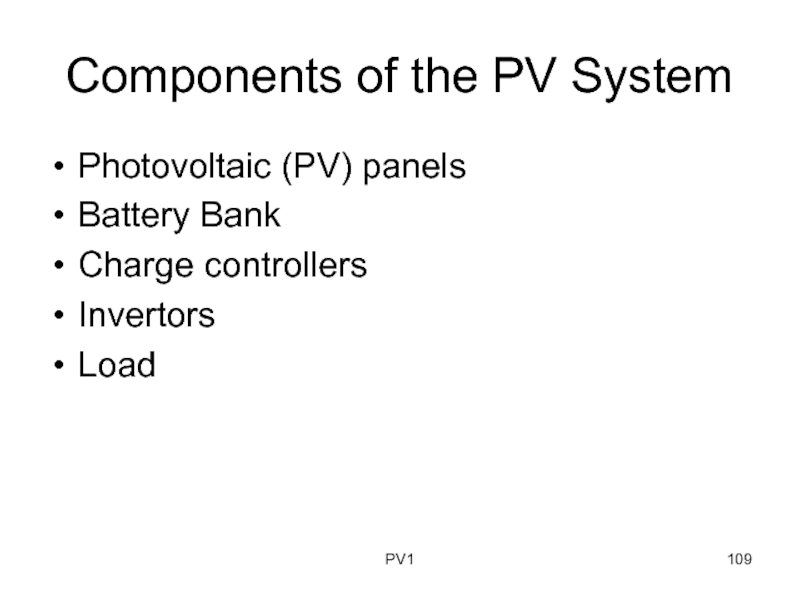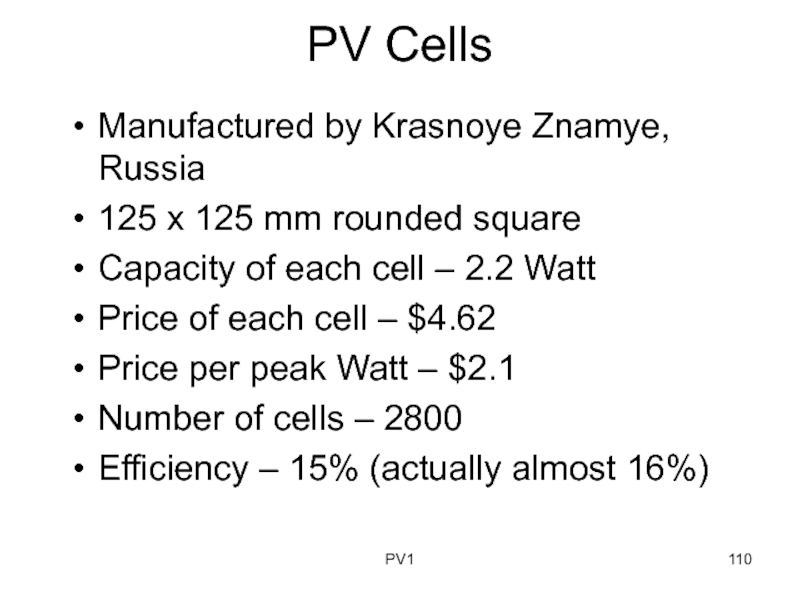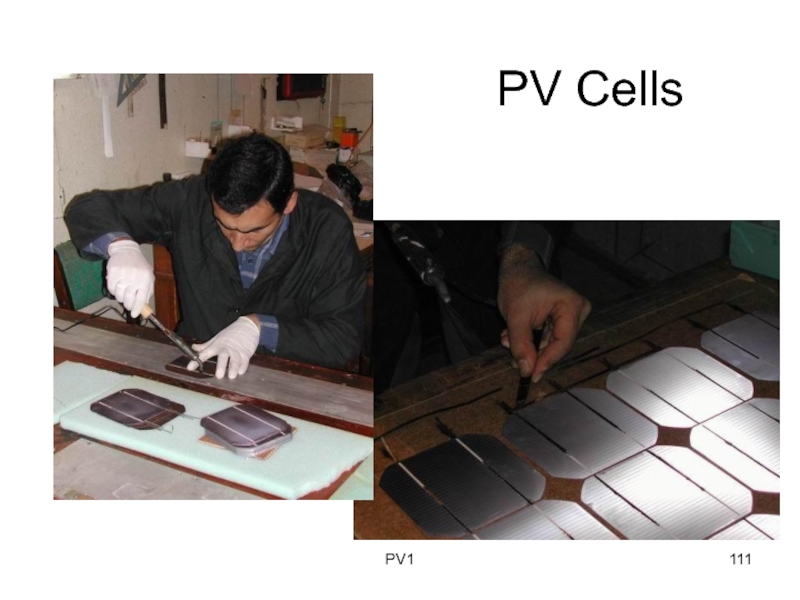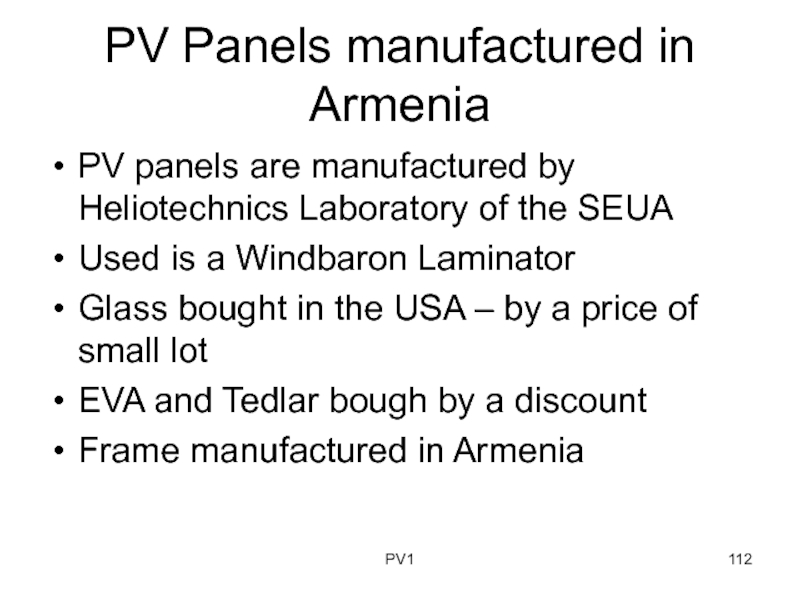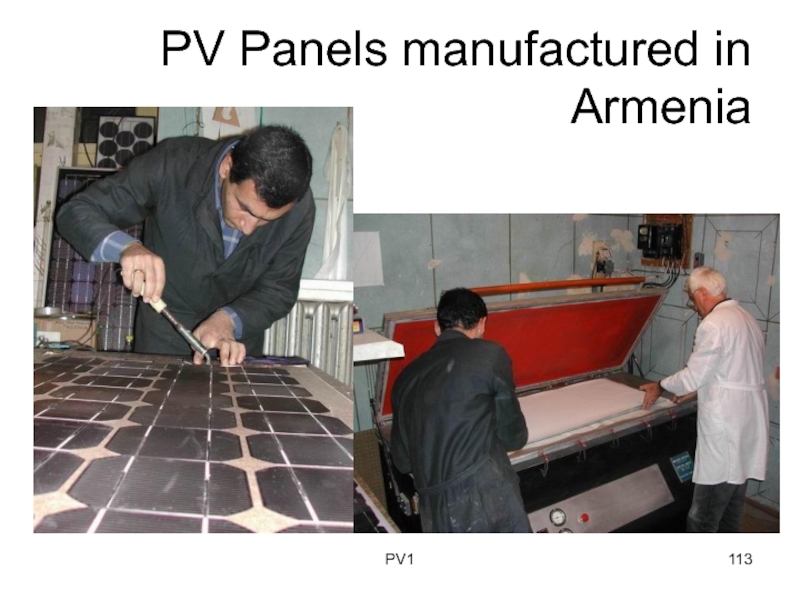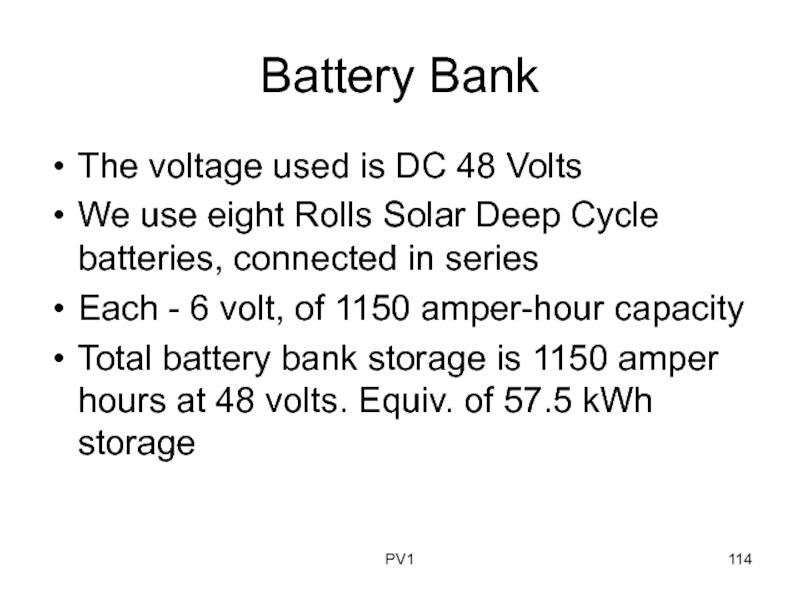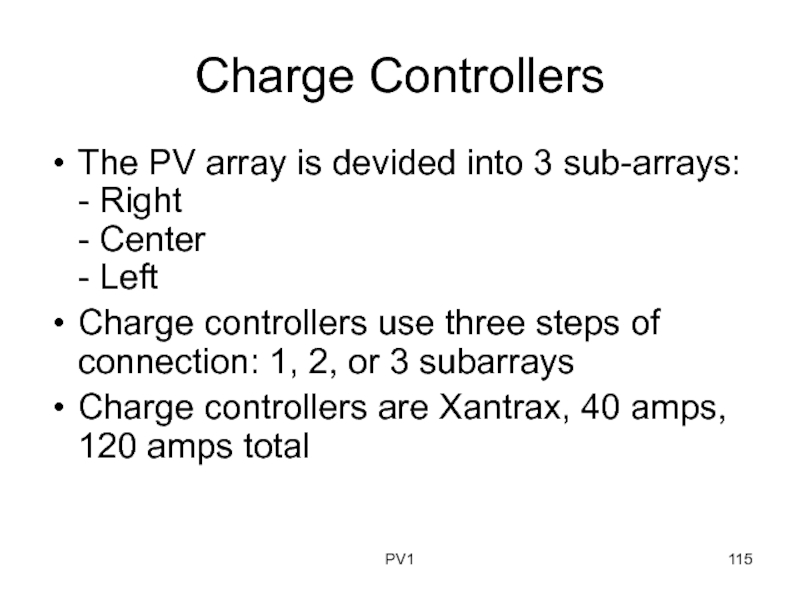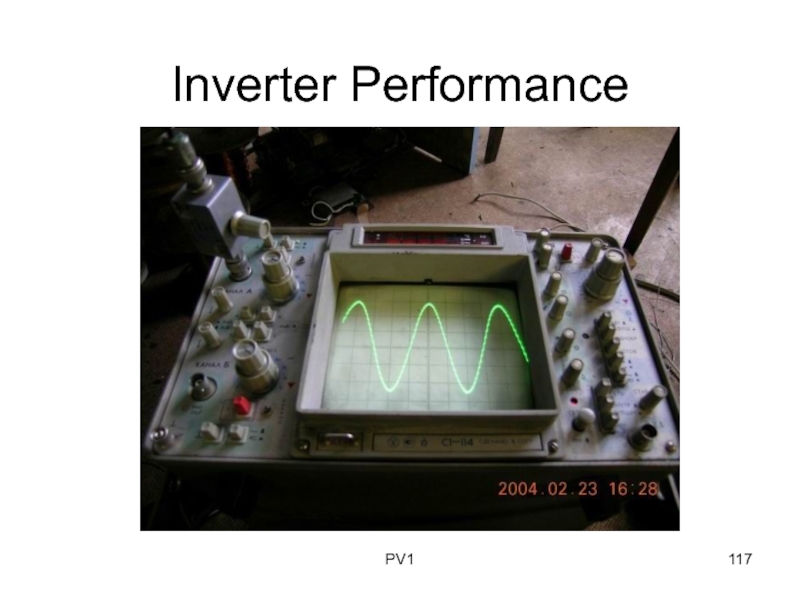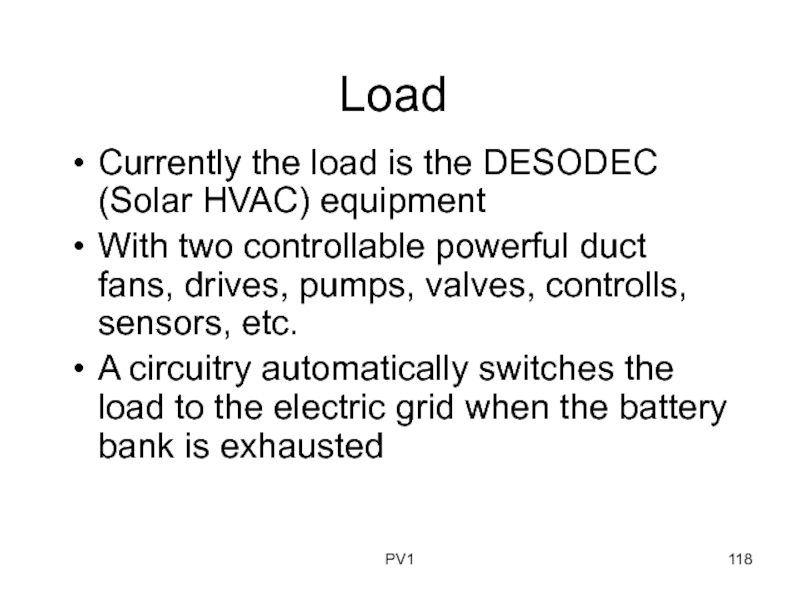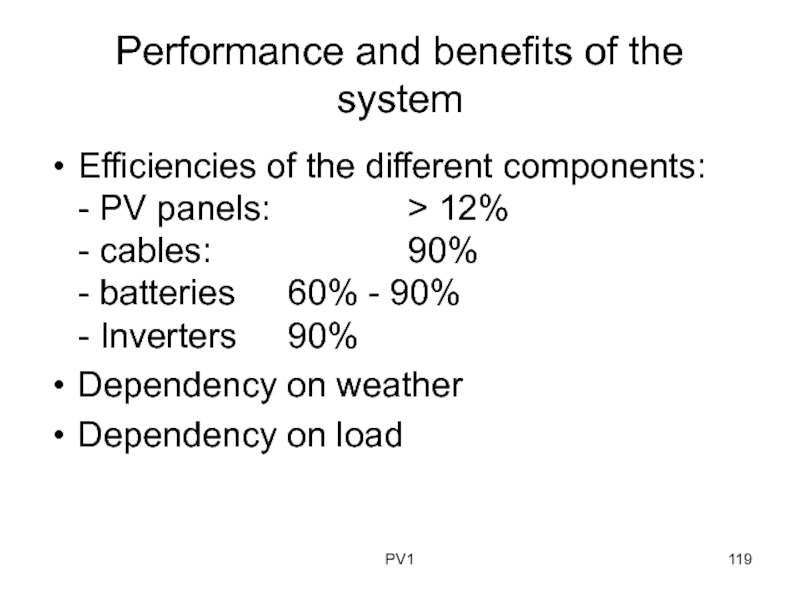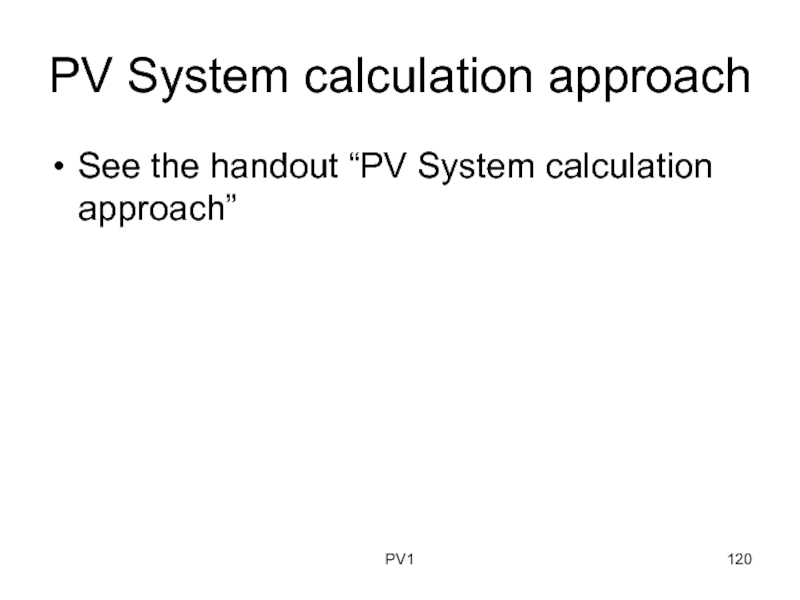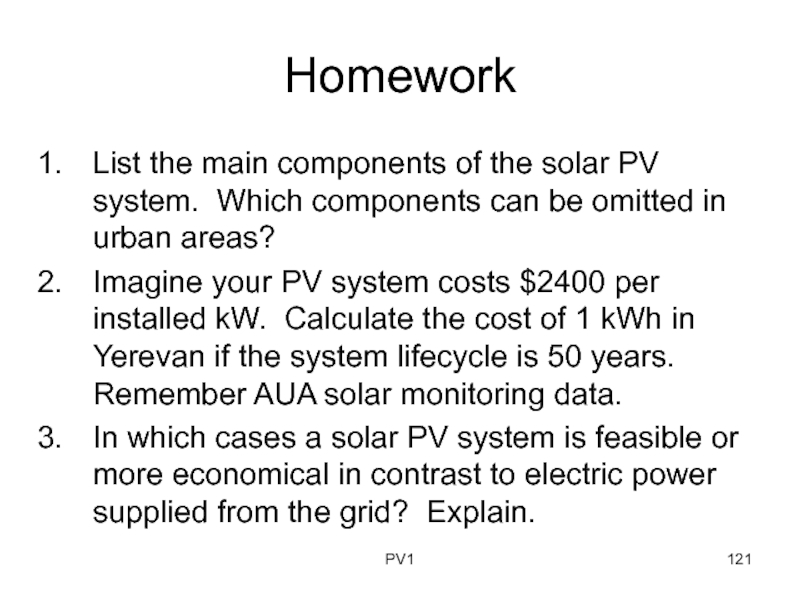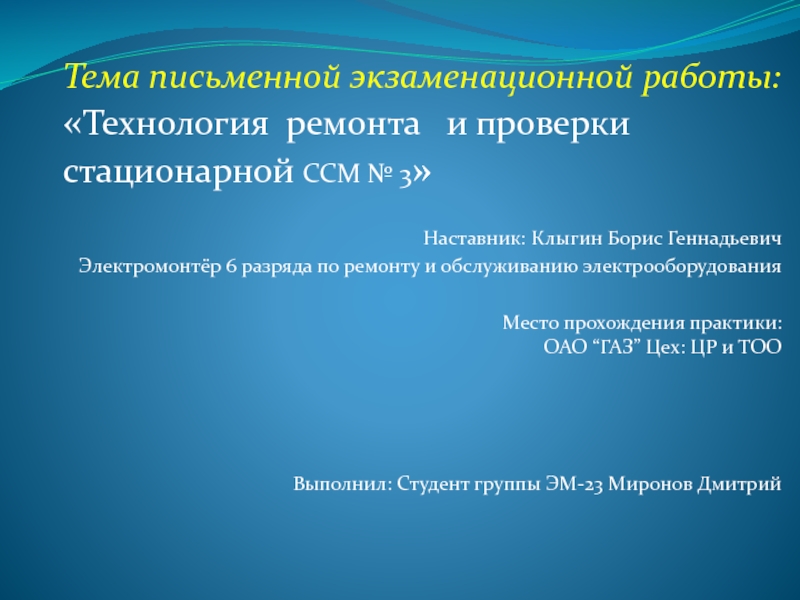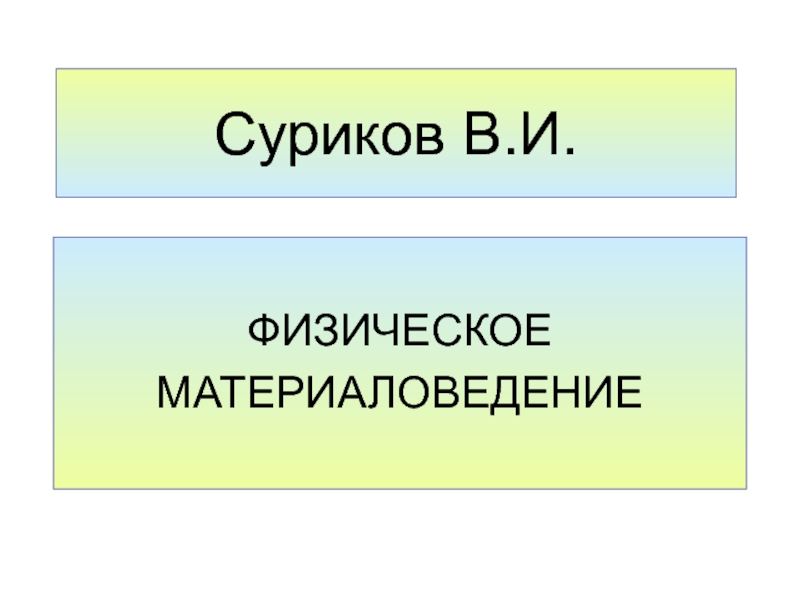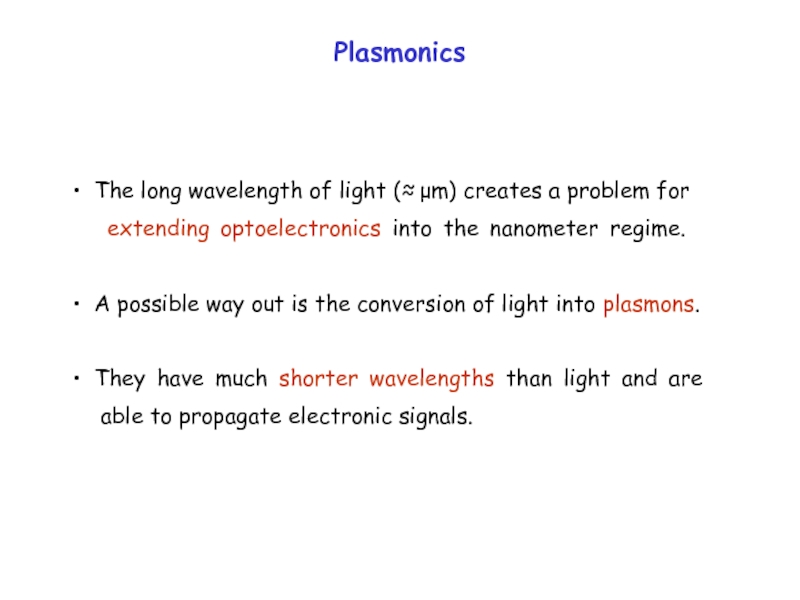- Главная
- Разное
- Дизайн
- Бизнес и предпринимательство
- Аналитика
- Образование
- Развлечения
- Красота и здоровье
- Финансы
- Государство
- Путешествия
- Спорт
- Недвижимость
- Армия
- Графика
- Культурология
- Еда и кулинария
- Лингвистика
- Английский язык
- Астрономия
- Алгебра
- Биология
- География
- Детские презентации
- Информатика
- История
- Литература
- Маркетинг
- Математика
- Медицина
- Менеджмент
- Музыка
- МХК
- Немецкий язык
- ОБЖ
- Обществознание
- Окружающий мир
- Педагогика
- Русский язык
- Технология
- Физика
- Философия
- Химия
- Шаблоны, картинки для презентаций
- Экология
- Экономика
- Юриспруденция
Lecture # 11 PV1. Solar Photovoltaics, AUA Solar System презентация
Содержание
- 1. Lecture # 11 PV1. Solar Photovoltaics, AUA Solar System
- 2. Photovoltaics - PV Photo Voltaic effect –
- 3. Trend: PV capacity growth EPIA - European Photovoltaic Industry Association - forecast 2014-2018 PV1
- 4. Photovoltaics: Principles Introduction - Quantum mechanics Physical
- 5. Popular Quantum Mechanics Interference of Particles. Bohr’s
- 6. Electromagnetic (EM) radiation
- 7. Dualism of EM radiation EM radiation exhibits
- 8. Double slit experiment LIGHT PV1
- 9. Double slit experiment Electrons PV1
- 10. Bohr’s model of atom. PV1
- 11. Electron can change its “orbital” by
- 12. Absorption only happen if the photon energy
- 14. Atom Energy Levels Isolated atom’s energy levels
- 15. A system of two atoms N=2 Energy levels are split into two levels Energy
- 16. N – atom system Energy N=4 Energy levels are split into 4 levels
- 17. Solid body – crystalline lattice: Energy N
- 18. When N >>, e.g. in solid bodies, 1023 atom per cm3.
- 20. Electronic Energy Bands In solids the atomic
- 21. Metal vs. Semiconductor, vs. Insulator the
- 22. At non-zero temperatures, PV1
- 23. PV1
- 24. Silicon crystal structure PV1
- 25. P-N-Junction PV1 P-N-Junctions have the ability to
- 26. PV power generation PV1
- 27. PV1
- 28. PV1
- 29. PV1 Now, what will happen
- 30. P-N-Junction The interface of the p-doped and
- 31. PV1
- 32. Summary of physical principles of Photovoltaic (PV)
- 33. P-N-Junction PV1
- 34. PV power generation PV1 solar PV cell
- 35. Light emission diode = LED LED performs
- 36. Sensitivity Spectrum Why PV cells are sensitive
- 37. Sensitivity Spectrum – via wavelength or equivalent via photon energy PV1
- 38. Summary of physical principles of Photovoltaic (PV)
- 39. Summary of physical principles of Photovoltaic (PV)
- 40. Factors Influencing Efficiency Semiconductor related Percentage of
- 41. Percentage of spectral overlapping PV1
- 42. Spectrum vs. Energy PV1
- 43. Absorption depth vs. p-n-junction depth and thickness Iν(x) = Iν0e-αx PV1
- 44. Recombination of electrons and holes PV1
- 45. The reverse current in the p-n-junction –
- 46. Shockley-Queisser Limit The Shockley-Queisser limit for the
- 47. Factors Influencing Efficiency Factors outside the semiconductor
- 48. Surface reflectance By the semiconductor surface By
- 49. Optical Fill Factor (OFF) The area that
- 50. Electrical Fill Factor (EFF) is the Preal/(IscVoc),
- 51. Max Power Point PV1 Pmax = IscVoc never happens in real situations
- 52. Organic PV cell test, AUA PV1
- 53. Types of Solar Converters Crystalline Silicon: Single-crystal
- 54. PV cell materials in the market Market
- 55. PV cell materials in the market Market
- 56. Efficiency In 1884 the first Selenium Solar
- 57. Stacked multi junction solar cells PV
- 58. PV Stacked multi junction – MJ – solar cells
- 59. PV
- 60. Components of the PV System Photovoltaic (PV)
- 61. PV
- 62. PV System calculation approach for net metering
- 63. Types of Solar Converters Photoelectrochemical cells –
- 64. Concentration PV Photovoltaic concentrators have the added
- 65. Multi-junction Solar cells under illumination of at
- 66. Amonix concentration systems PV Vahan Garbushian
- 67. BIPV PV
- 68. BIPV Similarly, if it is possible to
- 69. Efficiency In 1884 the first Selenium Solar
- 70. PV1
- 71. 2009 vs 2003 PV1
- 72. 03 November, 2011 PV1
- 73. 20 November, 2012 PV1
- 74. 11 November 2013 PV1
- 75. November 2014 PV1
- 76. November 2015 PV1
- 77. How to compare solar cells? Efficiency Longevity – time to degradation Peak watt price PV1
- 78. Notion of the peak power price (PPP)
- 79. How to compare PV cells, modules? Peak
- 80. PV module cost per peak watt PV1
- 81. PV module cost per peak watt – logarithmic PV1
- 82. PV1
- 83. PV1
- 84. PV1
- 85. PV1
- 86. PV1
- 87. 2004 world status of PV industry. PV1
- 88. PV1
- 89. PV1
- 90. Types of Solar Converters Photoelectrochemical cells –
- 91. PV manufacturing from Ore to Cells. Silicon
- 92. Realizations Fixed tilted flat panel Concentration PV (Tracking systems) Integrated PV PV1
- 93. PV systems The
- 94. Photovoltaic wall at MNACTEC Terrassa in Spain PV1
- 95. PV standalone solar system PV1 Solar PV
- 96. PV grid connected solar system PV1 Solar
- 97. PV1 PV grid connected solar system
- 98. AUA SPVS general information Each panel has
- 99. PV Arrays PV1
- 100. PV Arrays PV1
- 101. Current Rooftop Setup PV1
- 102. AUA Solar Rooftop Strategy PV1
- 103. Should fit to the irregular shape of
- 104. PV1
- 105. PV1
- 106. PV1
- 107. PV1
- 108. AUA SPVS general information Project Participants: SEUA
- 109. Components of the PV System Photovoltaic (PV)
- 110. PV Cells Manufactured by Krasnoye Znamye, Russia
- 111. PV Cells PV1
- 112. PV Panels manufactured in Armenia PV panels
- 113. PV Panels manufactured in Armenia PV1
- 114. Battery Bank The voltage used is DC
- 115. Charge Controllers The PV array is devided
- 116. Inverters – made in Armenia Designed and
- 117. Inverter Performance PV1
- 118. Load Currently the load is the DESODEC
- 119. Performance and benefits of the system Efficiencies
- 120. PV System calculation approach See the handout “PV System calculation approach” PV1
- 121. Homework List the main components of the
Слайд 2Photovoltaics - PV
Photo Voltaic effect – phenomenon, when light energy directly
First was detected in 1839 by French physicist Alexandre-Edmond Becquerel.
A quintessential source of energy – operation is absolutely clean environmentally, no moving parts.
However its production process is not perfect, but overall PV performs environmentally much better than any other source.
PV1
Слайд 3Trend: PV capacity growth EPIA - European Photovoltaic Industry Association -
PV1
Слайд 4Photovoltaics: Principles
Introduction - Quantum mechanics
Physical principles of Photovoltaic (PV) Conversion
Efficiency, degradation,
Various realizations: - flat panel - concentrator - tracking/non-tracking
Materials: Si, Thin film
PV1
Слайд 5Popular Quantum Mechanics
Interference of Particles.
Bohr’s model of atom.
Energy states in a
Metals, semiconductors, insulators.
P-N-Junction
PV modules
PV system components.
PV1
Слайд 7Dualism of EM radiation
EM radiation exhibits both wave behavior and particle
Thomas young’s and Richard Feynman's two-slit experi-ments
Слайд 12Absorption only happen if the photon energy match the atom’s energy
Կլանում
Ճառագայթում
Слайд 14Atom Energy Levels
Isolated atom’s energy levels correspond to the orbitals
The Pauli
Energy
Слайд 17Solid body – crystalline lattice:
Energy
N >>, primary energy levels are split
Solid body – crystalline lattice: formation of bands
At 0K temperature all states are occupied in the valence band
At 0K temperature all states are free in the conduction band
Слайд 20Electronic Energy Bands
In solids the atomic energy levels turn into bands
r
Слайд 21Metal vs. Semiconductor, vs. Insulator
the band structure defines if a
Слайд 25P-N-Junction
PV1
P-N-Junctions have the ability to form built in electric field in
Слайд 29
PV1
Now,
what will happen if a semicon-ductor structure’s p-n-junction is bombar-ded
Слайд 30P-N-Junction
The interface of the p-doped and n-doped semiconductors is called P-N-Junction
P-N-Junction
P-N-Junction has a built in electric field, without spending any electric power
P-N-Junction electric field separates the photogenerated electron-hole pairs, and creates external voltage and current.
PV1
Слайд 32Summary of physical principles of Photovoltaic (PV) Conversion
E=hν>Eg
Energy, eV
X
hole
E=hν>Eg
separation of
PV1
Слайд 34PV power generation
PV1
solar PV cell is a diode due to the
Слайд 35Light emission diode = LED
LED performs the opposite function – converts
Conversion is performed due to recombinative radiation
PV1
Слайд 36Sensitivity Spectrum
Why PV cells are sensitive to light spectrum?
What will happen
Semiconductor will be transparent to this radiation.
PV1
Слайд 38Summary of physical principles of Photovoltaic (PV) Conversion
Existance of electrones and
Built in electric field in the semiconductor
PV1
Слайд 39Summary of physical principles of Photovoltaic (PV) Conversion
PV1
solar PV cell is
Слайд 40Factors Influencing Efficiency
Semiconductor related
Percentage of spectral overlapping
Quantum efficiency, Absorption depth vs.
Recombination of electrons and holes in the bulk of Si: diffusion length L or lifetime τ.
The reverse current in the p-n-junction, because of recombination
PV1
Слайд 45The reverse current in the p-n-junction – defects inside SCR that
PV1
Слайд 46Shockley-Queisser Limit
The Shockley-Queisser limit for the efficiency of a single-junction solar
PV1
Слайд 47Factors Influencing Efficiency
Factors outside the semiconductor
Surface reflectance
Shading by collecting electrode, effective
Unbalanced load – non-maximal power point. Electrical Fill Factor (EFF).
PV1
Слайд 48Surface reflectance
By the semiconductor surface
By the weather encapsulation
By the low-iron, tempered
Anty-reflective coatings decrease the reflectance but are expensive.
PV1
Слайд 49Optical Fill Factor (OFF)
The area that is open for the radiation
Shading
Effective surface of the module
Distance between modules
Distance between rows in the solar field
The solar system total area
PV1
Слайд 50Electrical Fill Factor (EFF) is the Preal/(IscVoc), Isc = short circuit
PV1
This is a so called I-V-curve for the solar PV cell diode p-n-junction
Слайд 53Types of Solar Converters
Crystalline Silicon: Single-crystal (c-Si) – eff 22%
Crystalline Silicon:
Amorphous Silicon (Si-A) – eff 9%, degradation.
All Si technologies make 86% of the market.
Thin Film:
CdTe is easier to deposit and more suitable for large-scale production. Eff = ususally 6%-10%, up to 15.8% in experiments.
Copper Indium Gallium Selenide (CIGS) are multi-layered thin-film heterojunction composites. 19.5% Potentially up to around 30%, could be put on polyamide base.
Multijunction stacks - Gallium arsenide (GaAs), eff = 47%!!! - space applications. Albeit extremely expensive, - thus uses in the concentrated PV
PV1
Слайд 54PV cell materials in the market
Market share percentage of PV cell
Production by country, 2012
PV1
Слайд 55PV cell materials in the market
Market share percentage of PV cell
Production by country, 2012
PV
Слайд 56Efficiency
In 1884 the first Selenium Solar cell had 1% efficiency.
The theoretical
The real, economically productive values are 16% - 24%.
PV
Слайд 60Components of the PV System
Photovoltaic (PV) panels
Battery Bank
Charge controllers
Invertors
Load
PV
Слайд 62PV System calculation approach for net metering case
Find out from your
Find out your local monitoring data – amount of global horizontal (GH) kWh-s (Em). At tilted angle (30⁰ for Yerevan) you can have more than 20% advantage, reaching 1800 kWh/m2 annually. However due to shading or other losses – you will need to make an assessment – you can take for Em e.g. 1500 kWh/m2 for calculation.
Remember that since @ 100% efficiency your modules 1 m2 corresponds to 1 kW of rated power, the Ee/Em = PS your needed system power capacity. E.g. @ Ee= 3000; Em e.g.= 1500 kWh/m2 annually, PS = 2 kW. Here 1500 kWh/m2 is replaced by 1500 kWh/kW.
Homework: calculated the price of your system, look at previous slide.
PV
Слайд 63Types of Solar Converters
Photoelectrochemical cells – now up to eff of
Polymer solar cells = 4-5%
nanocrystal Si (nc-Si) solar cells, quantum dot technology
PV
Слайд 64Concentration PV
Photovoltaic concentrators have the added benefit of an increase in
Concentrators reduce the cost. Solar cell are fairly expensive, however mirror and optics are much cheaper. So a small solar cell concentrated can produce more energy with mirrors or optics than the equivalent area with a larger solar array.
PV
Слайд 65Multi-junction Solar cells
under illumination of at least 400 suns, MJ solar
PV1
Слайд 68BIPV
Similarly, if it is possible to use part of the windows
At the same time the Integrated PV is an innovative, aesthetically interesting element that can be a part of the architectural idea - recently popular PV module placement location is the south facing portions of the building envelop, perfectly helping to address both economizing dimensions of the integrated PV.
PV
Слайд 69Efficiency
In 1884 the first Selenium Solar cell had 1% efficiency.
The theoretical
The real, economically productive values are 16% - 24%.
PV1
Слайд 78Notion of the peak power price (PPP)
Price of a cell, module
Note that this is more important than the solely the efficiency.
Correct way of comparing the prices of various solar options – for any technology.
Is there a peak watt notion for wind?
PV1
Слайд 79How to compare PV cells, modules?
Peak power price - $/Wp.
Lifetime –
Efficiency, %
PV1
Слайд 90Types of Solar Converters
Photoelectrochemical cells – now up to eff of
Polymer solar cells = 4-5%
nanocrystal Si (nc-Si) solar cells, quantum dot technology
PV1
Слайд 91PV manufacturing from Ore to Cells.
Silicon resource, abundant, but…
… stringent requirements
Metallurgic silicon
Silane gas
Poly-Silicon
Czochralsky (CZ) method
Other methods
New alternate methods
PV1
Слайд 93PV systems
The CIS Tower, Manchester, England, was clad in PV panels
PV1
Слайд 95PV standalone solar system
PV1
Solar PV field
Support Structure
Batteries (voltage?) and charge controllers.
Inverter
Load
Слайд 96PV grid connected solar system
PV1
Solar PV field
Support Structure
Grid Inverter
Load – AC.
One
Слайд 98AUA SPVS general information
Each panel has approximately 0.7 square meters surface
The 72 solar photovoltaic panels are installed on a special earthquake resistant structure
Total battery bank storage is 1150 amper hours at 48 volts. Equiv. of 57.5 kWh
Output is 3-phase 400 volt through 3 x 230 V, 10 kVA
PV1
Слайд 103Should fit to the irregular shape of AUA rooftop
Be earthquake resistant
Be
Support Structure
PV1
Слайд 108AUA SPVS general information
Project Participants:
SEUA Heliotechnics Lab team
Viasphere Technopark Transistor Plus
AUA team with Dr. Melkumyan’s group
PV1
Слайд 109Components of the PV System
Photovoltaic (PV) panels
Battery Bank
Charge controllers
Invertors
Load
PV1
Слайд 110PV Cells
Manufactured by Krasnoye Znamye, Russia
125 x 125 mm rounded square
Capacity
Price of each cell – $4.62
Price per peak Watt – $2.1
Number of cells – 2800
Efficiency – 15% (actually almost 16%)
PV1
Слайд 112PV Panels manufactured in Armenia
PV panels are manufactured by Heliotechnics Laboratory
Used is a Windbaron Laminator
Glass bought in the USA – by a price of small lot
EVA and Tedlar bough by a discount
Frame manufactured in Armenia
PV1
Слайд 114Battery Bank
The voltage used is DC 48 Volts
We use eight Rolls
Each - 6 volt, of 1150 amper-hour capacity
Total battery bank storage is 1150 amper hours at 48 volts. Equiv. of 57.5 kWh storage
PV1
Слайд 115Charge Controllers
The PV array is devided into 3 sub-arrays:
- Right
- Center
-
Charge controllers use three steps of connection: 1, 2, or 3 subarrays
Charge controllers are Xantrax, 40 amps, 120 amps total
PV1
Слайд 116Inverters – made in Armenia
Designed and Manufactured by Transistor Plus of
Output is 3-phase 400 volt through 3 x 230 V, 10 kVA, - 3 sine-wave inverters
PV1
Слайд 118Load
Currently the load is the DESODEC (Solar HVAC) equipment
With two controllable
A circuitry automatically switches the load to the electric grid when the battery bank is exhausted
PV1
Слайд 119Performance and benefits of the system
Efficiencies of the different components:
- PV
Dependency on weather
Dependency on load
PV1
Слайд 121Homework
List the main components of the solar PV system. Which components
Imagine your PV system costs $2400 per installed kW. Calculate the cost of 1 kWh in Yerevan if the system lifecycle is 50 years. Remember AUA solar monitoring data.
In which cases a solar PV system is feasible or more economical in contrast to electric power supplied from the grid? Explain.
PV1
